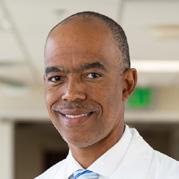
DELICIOUS AND LOW-CALORIE SUMMER RECIPES AND COOKING TIPS. A MOM’S INSIGHT ON NAVIGATING SUMMER. THE HEALING POWER OF UNDERWATER THERAPY.









































DELICIOUS AND LOW-CALORIE SUMMER RECIPES AND COOKING TIPS. A MOM’S INSIGHT ON NAVIGATING SUMMER. THE HEALING POWER OF UNDERWATER THERAPY.








































adiation treatment can sound intimidating if you don’t know what to expect. External beam radiation, the most common type used in cancer treatment, takes just a few minutes per session. During that time, a machine called a linear accelerator aims a beam of high-energy X-rays at cancer tumors. The beam damages the DNA of cancer cells, killing them while leaving healthy tissues intact.
A simulation is done before any radiation treatment begins. This includes a CT scan, which will show where to aim the radiation. A mold customized to your body will be made, so that you rest in the same position for every treatment session.
Your radiation oncologist will meet with RBOI’s dosimetrists and medical physicists. It can take one to
two weeks to design a treatment plan based on your CT scan. Your treatment will be highly tailored and specific to your unique body shape and exact tumor location.
In the treatment room, your customized mold will be retrieved and you will rest in the same position as you did during the simulation. The linear accelerator will move around your body while, outside the room, your radiation therapist will monitor your treatment through cameras and computer systems. You will hear the accelerator running, but you will not feel the radiation while you receive it.
RBOI has created a video that walks you through the radiation treatment process. On RBOI.com, go to the Patient Services drop-down menu, then to Before Treatment, and click on Your First Visit.


Members of RBOI’s radiation team are full-time, board-certified, and monitor you closely throughout treatment.
Your radiation oncologist specializes in cancer treatment and has completed a 4-year medical degree plus a 4-year residency in radiation oncology. (A radiation oncologist is different from a medical oncologist, who is also an expert in drug and hormone cancer treatments, such as chemotherapy.)
Based on your radiation oncologist’s prescription, the medical dosimetrist calculates the radiation dose for each treatment and plans how to deliver that dose to the cancer tumor(s). Medical dosimetrists are educated in physics, anatomy, and radiobiology.
The medical physicist verifies radiation dose calculations and checks that the equipment used to deliver the treatments is calibrated correctly and working properly. He or she has a master’s or doctorate degree in medical physics.
The radiation therapist administers radiation treatments. He or she prepares the patient for each treatment, applies the
German physicist Wilhelm Conrad Roentgen discovers X-rays
radiation, records and verifies each treatment, and monitors the patient during treatment. Radiation therapists complete 2-year or 4-year professional educational programs focusing on physics, radiation safety, anatomy, and patient care.
Oncology nurses educate cancer patients and their families, monitor patients for signs and symptoms related to radiation therapy, and perform nutrition analyses. Oncology nurses are registered nurses with specialized experience in caring for cancer patients.
3
Ways radiation therapy is delivered: external beam, brachytherapy (internal insertion of radiation-emitting sources), and radioisotope therapy (injection of a radioisotope to target the disease)
Licensed clinical social workers have specialized knowledge of cancer’s impact on individuals and those around them. RBOI’s counselors meet with patients, families, and caregivers individually or together, and help connect you to appropriate resources, support, and services.
16,640
Radiation therapists in the US as of May 2023 (Bureau of Labor Statistics)

About
50%
Cancer patients who can benefit from radiation therapy in managing their disease (National Institutes of Health)
Patient-centered radiation oncology close to home
The Villages 352.259.2200
Ocala 352.732.0277
Timber Ridge 352.861.2400
Inverness 352.726.3400
Lecanto 352.527.0106
RBOI.com

Like us on Facebook




Explore “A Man’s Guide to Living Healthy,” where we cover key aspects of men’s health. From common physical conditions and mental health issues to spiritual wellbeing and financial stability, this feature provides practical advice and expert insights to help guys live a balanced and fulfilling life.
Story: Christine Andola
Miracles happen at The SCUBA Gym, a local nonprofit o ering underwater innovative SCUBA therapy for those with limited mobility due to medical conditions, disabilities and accidents. Join us in discovering the transformative power of this remarkable program.
Story: Roxanne Brown





These steak recipes and tips will help make your summer grilling plans sizzle!
Recipes: Louis Santiago
Local Fitness Trainer Tyrell Rachel’s T-Fit program blends fitness with faith, urging you to ditch comparisons and focus on your progress.
Story: Cindy Peterson
A mother’s candid account o ers a relatable glimpse into the joys and challenges of motherhood during the summer months.
Story: Sabrina Ciceri
Gain valuable insights and practical advice to navigate the most common fears among men and emerge stronger on the other side.
Story: Roxanne Brown Explore the emotional aftermath of su ering a stroke through the experiences of two
Story: Christine Andola
Get up to speed on digital currency and delve into the world of cryptocurrencies.
Story: Cindy Peterson

A dad and daughter have a thought-provoking debate about the financial habits and work ethics of today’s youth.
Story: Marc Robertz Schwartz and Cadi Schwartz
Story: Cynthia McFarland
Gina Horan








The Alzheimer’s Association of Central and North Florida, which serves 43 counties including Lake, Marion and Sumter, reminds us that September is World Alzheimer’s Awareness Month. The local organization provides education, support and fundraising help for families a ected by Alzheimer’s Disease and dementia. There is a 24/7 helpline (800.272.3900) for help and support. Donate at alz.org/cnfl.

Water-based exercise o ers advantages you can’t get on land. According to Harvard Health Publishing, exercising in the water is gentler on your joints, which makes the pool a welcoming environment for anyone with arthritis or joint injuries. Because water is denser than air, H2O provides 12-14% more resistance for cardio and strength training. Find out for yourself at these local public pools:
• Leesburg Aquatic Center, 302 Pine St., Leesburg | 352.728.9885
• H. O. Dabney Pool, 312 Pine St., Leesburg | 352.728.9887
• Mount Dora Swimming Pool, Lincoln Avenue Community Park, 1200 N. Unser St., Mount Dora | 352.735.7173 • Eustis
•





“Heels vs. Ties,” marriage largely reduces heart disease risk in men, but the stress of marriage increases heart disease risk in women. Who knew? For more fascinating and illuminating information, find Dr. Nitza at www.nitzamd.com or get “Heels vs. Ties” on Amazon.com.



August 12-18 is National Safe and Sound Work Week, sponsored by OSHA, NSC and The American Society of Safety Professionals. The week is a challenge to colleagues, suppliers and partner organizations to work safely each day and to inspire year-round safety overall. Some of the industries participating include:
• Agriculture
• Construction
• Federal agencies
• Healthcare
• Maritime
• Oil & Gas
• Warehousing





Regular foot care can be crucial for foot wellness and health. According to Tamara Weeks, a nail care wellness specialist, many of her clients come from podiatrists and she can help heal “troubled” toenails. “Many times, men will come in embarrassed because they have fungal issues or other problems,” says Tamara. “After treatment they leave feeling confident to wear sandals or go barefoot.” To introduce your toes to Tamara, call Ageless Beauty Med Spa in Leesburg / 352.319.6768.

Juicing is a longstanding dieting trend that has gained popularity in recent years. As you pulverize, crush and squeeze your fruits and veggies, consider the benefits as well as drawbacks.
PROS:
Juicing can be a good way to get more servings of fruits and vegetables into your diet and can provide important nutrients beneficial to your health.
CONS:
Juicing removes fiber that contains vital nutrients you need. In addition, excessive juicing can lead to increasing the number of calories you consume daily.


Eggs are a great source of protein and nutrients, and, unless you have been diagnosed with egg allergies, could be a great source of nutrition. If you are concerned with cholesterol, egg whites are a great choice. For more nutrients, go with the whole egg. Poaching and hardboiled are the healthiest preparation methods. Frying in butter and bacon fat may be tasty, but that preparation method is by far the least healthy.

Snoring can be adorable when it comes from your puppy... but human snoring is downright upsetting and annoying when it’s loud enough to shake the walls. If it gets to the point that you can’t breathe or sleep, you have to see a doctor. Your primary care physician is the best place to start for a referral to a sleep specialist. Be sure to have about three weeks of documented sleep information and keep track of the following:
• How long you sleep each night
• Your partner’s observations of you waking or not breathing
• How you feel in the morning and throughout your day
According to the ATF’s Tobacco Tax and Trade Bureau, the term “non-alcoholic” labels beers and malt beverages that contain less than 0.5% ABV. “Alcohol-free” can be labeled on malt beverages only if they contain 0.0% ABV. Either way, taking the booze out of beer is a fantastic way to keep the taste and sensation of a frosty brew and can help improve your overall health.
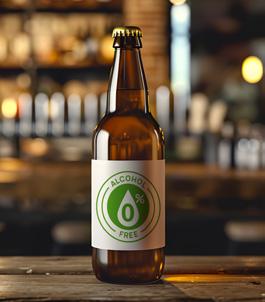

Learn the facts behind common myths about hair loss.
STORY: CHRISTINE ANDOLA
At this moment in history, men seem to be experiencing a free-for-all when it comes to hair styles. Everything from the man bun to the shaved head is in. Bald may be sexy to some, but there are still men who see hair loss as a sign of aging and waning virility. For those precious souls, we’ll get to the bottom of some timeless myths about the science behind hair loss.
Myth:
Wearing a hat causes male pattern baldness.
Fact: You may have heard this if you wore a baseball cap to the dinner table one too many times. According to Dr. Shimbul Meta at Sierra Robotic Hair Institute, there is no scientific evidence that your hat impedes oxygenated blood from getting to your scalp. Pulling your hair into a tight hairstyle is more likely to cause hair loss, so you might choose the baseball cap over a man bun.
Myth:
Too much hair washing or using a harsh shampoo can lead to baldness.
Fact: Hair loss is a deficiency of the hair follicle, not the hair itself. Washing your hair with bar body soap will leave you with frizzy, dry hair that breaks easily, but as long as your hair follicles are working, they’ll just grow fresh hair to replace it.
Myth:
Myth:
Baldness is inherited from your mother’s side of the family.
Fact: You can blame your mother for your slow metabolism and your slight stature, but your hair loss might not be her fault. Hereditary hair loss can come from either side of your family according to a 2012 article by Dr. Dawn Davis, a dermatologist at the Mayo Clinic. The best way to understand the origins of your baldness is to consult a medical doctor.
Myth:
There is no way to stop hair loss.
Fact: The FDA approved Finasteride and Minoxidil to improve hair follicle function and prevent further hair loss. However, a hair transplant might be a more permanent solution to hair loss, according to Dr. Rafael Sierra at Sierra Robotic Hair Institute. The medications only work as long as you keep using them, but hair transplanted from the back of your head will continue to grow.
Bald men are more manly because they have higher levels of testosterone.
Fact: Having a chrome dome has nothing to do with testosterone. Hair loss is not caused by how much testosterone a man has or doesn’t have, but by how well he uses it. Hair follicle function determines hair loss more than testosterone levels.
Christine is a 30-year communication professional with extensive writing experience across all platforms and genres and a wide variety of industries. She enjoys learning about the people in our community and sharing information in a way that resonates with readers.


Since 1983, Hospice of Marion County has provided abundant compassion and expert care along with the power of choice and a promise that, “You are not alone.” HMC is an affiliate member of Empath Health, a nonprofit, integrated network of care serving more than 26,000 individuals in hospice care, home health, elder care and more. We are ready to serve the community whenever you need us.

Cataract surgery is a remarkably safe and e ective procedure that can transform your vision and significantly enhance your quality of life. If you’re experiencing the cloudy, blurred vision characteristic of cataracts, you’re not alone—and there’s no need to be apprehensive. With the skilled hands of our ophthalmologists, cataract surgery is a straightforward process with a high success rate, designed to restore your clear sight and vibrant world. Understanding what cataract surgery involves can help ease any concerns. The procedure is typically done on an outpatient basis, meaning you can go home the same day. It starts with numbing your eye with local anesthesia, so you won’t feel any pain during the surgery. In fact, the entire process is often quicker and more comfortable than most people expect.
Our ophthalmologists make a tiny incision in the eye and using ultrasound waves to break up the cloudy lens into small pieces. These pieces are then gently removed from the eye. The surgeon then replaces the old lens with a new, clear artificial lens called an intraocular lens (IOL). This new lens is carefully chosen to suit your vision needs, potentially even reducing your dependence on glasses if you choose an advanced lifestyle lens.
One of the many benefits of cataract surgery is the quick recovery time. Most patients notice an improvement in their vision within a few days. While it’s important to follow your doctor’s instructions postsurgery, including using prescribed eye drops and avoiding strenuous activities for a short period, you’ll likely be back to your regular routine in no time. Imagine being able to read, drive, and enjoy your favorite
activities with newfound clarity!
Our ophthalmologists are not only highly trained and experienced but also deeply committed to patient care. They understand that the idea of eye surgery can be daunting and take the time to answer your questions, address your concerns, and ensure you feel comfortable every step of the way. Their expertise and compassion make a world of di erence in your surgical experience.
So, if you’re struggling with the e ects of cataracts, take heart in knowing that cataract surgery is one of the most e ective and routine surgeries performed today. With the trust and expertise of Ocala Eye’s dedicated ophthalmologists, you’re in excellent hands. Embrace the opportunity to see the world clearly again— cataract surgery can make that a reality.


















Explore key tips and essential insights for maintaining strong bones and overall bone health.

Summer, summer, summertime! Let’s get back into our bikinis or swim trunks, it’s time for backyard parties and BBQs. You can hit the sand running by following our quick summertime grilling guide that details di erent protein choices and some of their benefits.
As a bonus, we’ve included some favorite side dishes and marinades that create flavor and texture without salt and sugar.
TOP SIRLOIN VS. RIBEYE
Per 100g Raw Top Sirloin Ribeye
Calories 183 249
6 g 15 g
31 g 27g
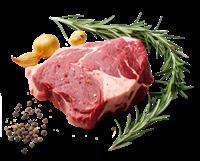
Sirloin is lower in calories and fat because of the natural composition of the cut of beef. It has less natural marbling as well, which makes it a leaner cut higher in protein content by volume. Sirloin also has a beefier flavor but is less juicy. Grilling is the most popular way to prepare sirloin, but you can also broil or pan-sear. Sirloin takes to most marinades. Usually, bold flavors pair well with sirloin because of the cut’s hearty flavor profile. Ribeye is rich due to its high marbling and fat content. Grilling is the best method for preparing ribeyes since it helps render all the intermuscular fats and leave behind a juicy texture and tons of flavor. Coarse salt and fresh ground black pepper are the best seasonings for ribeyes.

Per 100g Raw Salmon Mahi Mahi
Salmon has a naturally richer taste and is higher in oil content, which leads to its softer texture. Salmon can be grilled, baked, broiled, pan-seared and poached. Mahi Mahi is firmer, lower in fat content and lower in calories. Mahi can be prepared using high heat because of its leaner profile. So grilling, high heat broiling, fat frying or deep frying are executable methods. You can season delicately with salt, pepper and citrus or use other seasonings since Mahi, because of its neutral taste, takes on di erent flavors.


WHITE VS. DARK MEAT CHICKEN
Per 100g chopped, no skin
Meat
Meat
Dark meat, which comes from the legs and thighs of the chicken, is richer due to a higher concentration of fat. That means a juicier and more flavorful cut and a higher fat percentage compared to the meat’s weight. The white meat comes from the breast and wings. Firmer in texture by nature, it is a leaner protein source than dark meat. White meat has good flavor and adapts well to most marinades and seasonings.
POTATO SALAD VS. GRILLED SWEET POTATO SALAD (with chickpeas, roasted peppers and maple ancho chile dressing)
Serving: 100 G Traditional Potato Salad Grilled Sweet Potato Salad
CHEF’S SWEET POTATO RECIPE
Spritz
2-3
1
1
¼ cup
2 Tbsp.
¼ tsp.
¼ tsp.
1 Tbsp.
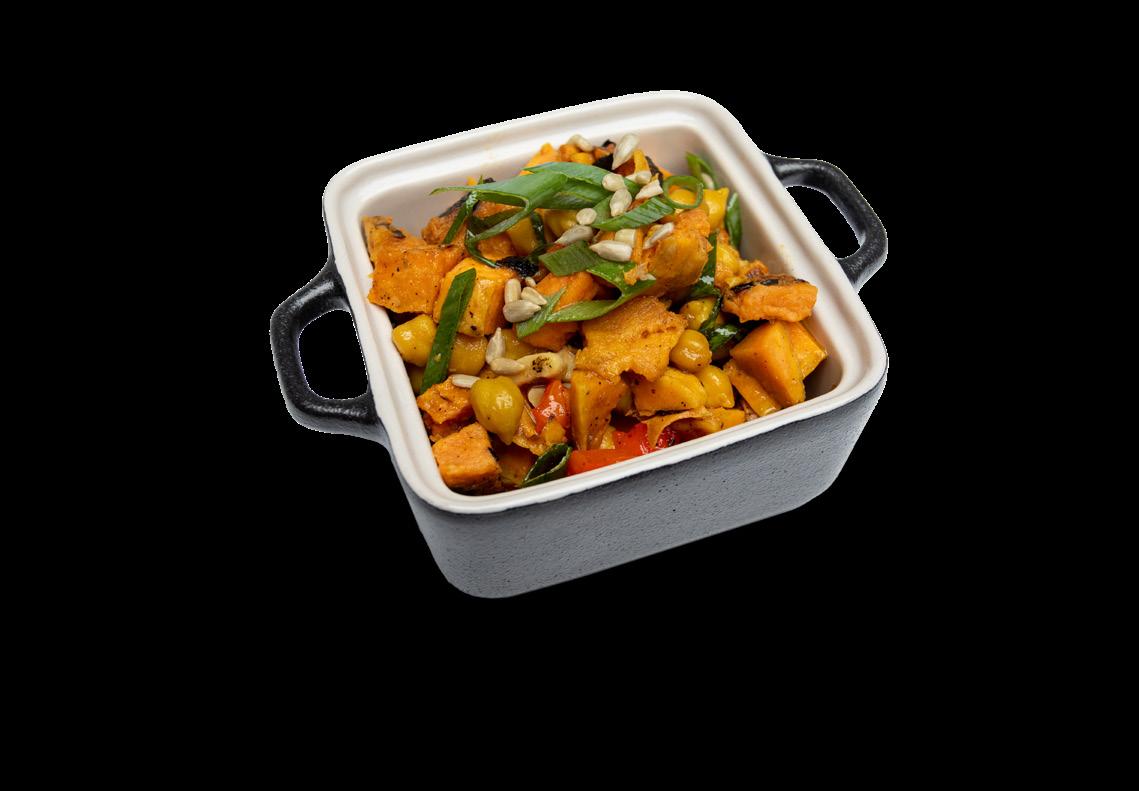
½ maple syrup dry oregano ancho chile powder olive oil
juice of half a fresh lime Salt to taste
Toasted sunflower seeds or pepitas to garnish
Preheat a gas grill to medium. In a bowl, toss sweet potatoes and red bell pepper with a few spritzes of olive oil to coat gently. Place on grill on the hot spots to create grill marks necessary to blister the pepper and create caramelization on the sweet potatoes. Remove the pepper and place in a bowl covered with plastic wrap until it cools (this allows the skin to be easier to remove). Move sweet potatoes to a cooler spot on the grill. Turn heat to low and let them cook through for approximately 12 to 15 more minutes. Remove from grill and let cool as well. In a separate bowl, mix together maple syrup, scallions, oregano, Ancho Chile powder, lime, olive oil and salt. Remove skin from pepper and dice approximately 1/2 inch by 1/2 inch. Drain and rinse chickpeas. Add all ingredients to the bowl. Toss with dressing and garnish with toasted sunflower seeds or pepitas.

CHEF SPEAKS:
Ancho chile is a smoked and dried poblano chile pepper that adds a mild heat, smokiness and earthiness to dishes.

Per 100g Macaroni Salad Orzo Pasta Salad
Calories
Protein (g) 3.7 g 1.8 g
Total Fat (g) 10.63 8.1 g
Saturated Fat (g) 1.63 1.57 g
Cholesterol (mg) 5 mg 4.5 mg
½ cup ¼ cup
SPICE BLEND:
½ tsp.
½ tsp.
¼ tsp.
¼ tsp.
¼ tsp.
¼ tsp.
¼ cup
1 Tbsp.
1 tsp.
1 cup
¼ cup
½ cup
1 ½ cups
¼ cup
2.25 oz.
dry whole wheat orzo
quinoa
dry basil
dry oregano
onion powder
garlic powder
dry thyme
ground black pepper
olive oil
balsamic vinegar
Dijon mustard
cherry tomatoes cut in half small diced red onion & rinsed under cold water baby rainbow or regular carrots sliced thin trimmed broccoli florets blanched for 2 minutes in boiling water and put in an ice bath to chill Feta cheese sliced olives drained well
Cook the quinoa in a 1-quart pot with cups of boiling water or broth. quinoa until tender about 15 minutes and strain o excess liquid and chill in fridge.
CHEF SPEAKS:
Try di erent marinades with sweeteners such as honey, maple and agave. Adding these sweeteners to the marinade will be healthier than using normal white and brown sugar. Grilling at high heat and oven roasting creates a Maillard reaction (Brown pigments are created by rearranging amino acids and certain simple sugars). The browned crust often creates flavor, aroma and color.
HONEY TERIYAKI MARINADE RECIPE
2 Tbsp. 1 tsp. 1 ½ tsp.
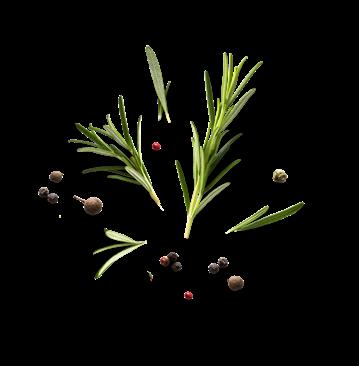
Put the ingredients for the spice blend into a bowl with olive oil, Dijon mustard and balsamic vinegar to make the dressing. Mix vegetables and pasta in a bowl with the dressing until coated well. Garnish with Feta cheese and let chill in fridge at least one hour to marry the flavors.
LOUIS SANTIAGO
EDITORIAL@AKERSMEDIAGROUP.COM
honey
fresh minced garlic
fresh minced ginger
onion powder
molasses
rice wine vinegar
low sodium soy sauce
sesame oil
Sesame seeds (optional)
STRAWBERRY, BASIL, BALSAMIC MARINADE
fresh or frozen strawberries
balsamic vinegar
maple syrup
onion powder
dry basil
olive oil
minced scallions
Salt and pepper to taste
STEAK HOUSE SAUCE
Worcestershire sauce
apple cider vinegar
1 tsp.
½
spicy mustard
ground black pepper
minced whole garlic clove
raisins
cayenne pepper
onion powder
olive oil
Louis Santiago is the chef and owner of Chef’s Concept Kitchen, located at Ageless Beauty Med Spa in Leesburg. He has been in the culinary field since 1997 and in the community since 2000. He worked for the Morse family of The Villages®, opening numerous country clubs for them, most notably Cane Garden Country Club, where he was chef for more than 14 years.


STORY AND PHOTOS: CINDY PETERSON
F
itness Coach Tyrell Rachel, a personal trainer at Infinity Fitness in Fruitland Park, has been shaping lives and inspiring fitness journeys for the past eight years.
With a total of 15 years in the fitness industry, Tyrell has become known for his deep, personal passion for helping others achieve their health goals through his program, TFIT. He’s won the

Lake & Sumter Style’s Best of the Best personal trainer category multiple times.
Tyrell was always athletic. In high school, he played on the Leesburg High School basketball team. After graduating and entering the workforce, he cemented his passion for fitness during a transformative journey and decided to focus on personal training.

Q: WHAT MOTIVATED YOU TO BECOME A FITNESS COACH?
A: Meeting people su ering from serious health issues like diabetes made me want to help others avoid those fates. After meeting a diabetic woman who was on the verge of losing her limbs, I realized the impact of fitness and nutrition on health. I decided to focus on personal training full-time, and I haven’t looked back since.
Q: WHAT IS YOUR ADVICE FOR SOMEONE JUST STARTING OUT IN FITNESS?
A: Get a trainer and nutrition coach. It’s essential to learn proper techniques and nutrition and have the right guidance from the start. Even if you start with a 30- to 45-minute walk, get out and start moving. Start now! No more excuses.
Q: DO YOU INCORPORATE A SPECIFIC DIET IN YOUR TRAINING?
A: I like to consume protein from whole food sources like meat, fish, dairy and high protein vegetables. If you’re looking to pack on muscle mass, eating protein is huge. Protein also helps with recovery from your workout sessions. Hydration will make a huge impact on your fitness journey. Drinking water will also help you get shredded or help you achieve your weight loss goals.
Q: WHAT IS YOUR FAVORITE EXERCISE FOR BUILDING MUSCLE MASS?
A: Compound movements like barbell squats, barbell bench presses, barbell deadlifts and barbell
overhead presses. They involve multiple muscle groups and provide a full-body workout. But it’s going to vary from person depending if they have lack of mobility, lower back or shoulder injuries.
Q: HOW DO YOU BALANCE STRENGTH TRAINING WITH CARDIO EXERCISE?
A: The TFIT program is based on functional strength training, high intensity interval training, and endurance training. It’s a great program to challenge my clients to help them reach their full potential.
For beginners, I recommend starting with 30 to 45 minutes of strength training to maintain energy, followed by 15 to 20 minutes of low-intensity steadystate cardio exercise.
Q: WHAT ARE SOME COMMON MISTAKES YOU SEE BEGINNERS MAKE IN THE GYM?
A: The biggest mistake is not warming up properly. It’s crucial to spend about 10 minutes raising your heart rate and preparing your muscles for exercise. If I know I’m going to be doing a chest workout, I’ll begin with pushups. If working legs, I’ll start with some lunges. Get those muscles moving before going straight into the workout. It will help you avoid injury.
Q: HOW IMPORTANT IS REST AND RECOVERY?
A: Extremely important. You don’t need to work out 6 or 7 days per week. It’s crucial to give your body time to recover. When you rest, your muscles start to heal and grow back stronger.
CINDY PETERSON CINDY@AKERSMEDIAGROUP.COM

Q: WHAT MOTIVATES YOU TO STAY CONSISTENT WITH YOUR FITNESS ROUTINE?
A: Thinking about my family, my clients and being a good role model. I look at my family and know that I want to be there for them. A parent wants to be around for their child. A wife wants to be around for their husband. Being healthy and taking care of yourself exists outside of the gym.
Q: ARE THERE SPECIFIC HEALTH CHALLENGES THAT MEN FACE AS THEY AGE?
A: Yes, men tend to lose muscle mass as they age, which is why maintaining strength training and proper nutrition is critical. It’s common for men to experience muscle sagging over time. I see this a lot. Getting regular checkups on testosterone levels and eating right are things that will help retain the muscle they gained in their earlier years.
Q: HOW DO YOU DEFINE SUCCESS IN TERMS OF FITNESS?
A: For me, it’s about being able to move well and stay healthy. For my clients, success is about consistent improvement. I want them to enjoy this experience. I’m constantly encouraging them and noticing the improvements to ensure they want to come back.
Cindy is a multimedia specialist in journalism, photography, and videography. She is the Digital Media Editor for Style Magazine and producer of the Healthy Living Podcast. She also produces for Beacon College’s Telly Award-winning PBS show, “A World of Di erence.”

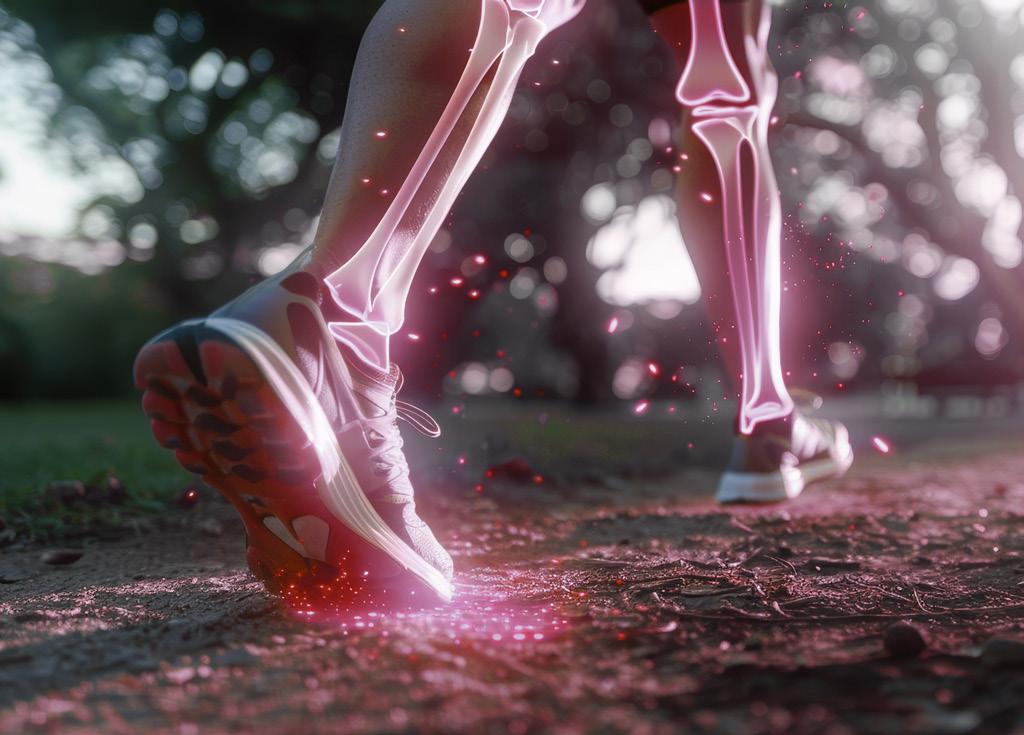
ASTORY: CYNTHIA MCFARLAND
s we age, our bones continue to remodel, but we lose bone mass because the resorption of bone is usually greater than bone formation. In most people, bone mass peaks by age 30.
Osteoporosis can occur if bones become brittle and weak. Research shows that one in three women and one in five men experience an osteoporotic fracture after the age of 50.
While medication is available to help increase bone density in people diagnosed with osteoporosis, there are side e ects.
Addressing bone health before you have a problem is your safest plan.
Certain factors increase the odds of developing osteoporosis, including:
• BEING OLDER THAN 50
• BODY MASS INDEX (BMI) OF 19 OR LESS
• SMOKING
• ALCOHOL USE
• CAFFEINE AND SODIUM INTAKE
• INACTIVITY; SEDENTARY LIFESTYLE
• BEING FEMALE
• BEING WHITE OR ASIAN
• INADEQUATE CALCIUM AND VITAMIN D
• POOR DIET (LOW IN PROTEIN, VEGGIES AND FRUITS)
• LONG-TIME USE OF STEROIDS
“Our bones are our structure, and if the structure crumbles, you’re setting yourself up for injury and poor outcomes,” says Amy Ester FNP-C, whose practice, Anchored in Health, is located in Oxford.
“Prevention starts at primary care, and lifestyle is where prevention starts,” Amy says. Whether a patient comes for a wellness exam or preventative care, Amy is all about education. And when it comes to bone health?
“If you don’t use it, you lose it,” Amy says. “Once your bones start weakening, you really need to preserve what you have.”
She explains that modifying your lifestyle for the better is the No. 1 thing you can do to improve your health.
Since we can’t change our genes, you may be at risk if bone loss is part of your family history. If that’s your reality, you need to be proactive.
“Change your mindset and see what is modifiable in your life to prevent this from happening and to prolong your health,” Amy advises.
For instance, she says, tobacco and alcohol use contribute to weakened bones in both men and women. There’s the weight factor, too.
“Maintaining a healthy weight is very important because the heavier you are, the more stress this puts on your bones and the less you want to exercise,” she adds.

Although a healthy diet is the best way to get needed nutrients, many people don’t consume adequate amounts in food, so Amy recommends using a quality supplement to get enough calcium and vitamin D, which work together and are crucial for bone health.
Men ages 51-70 need 1,000 milligrams of calcium a day. Women should have 1,200 milligrams. At 71 and older, men should also have 1,200 milligrams daily.
Adults ages 50 and older should have 800 to 1,000 IU (20 milligrams = 800 IU) of vitamin D per day.
“Optimal vitamin D levels are important to increase the e ciency of calcium absorption. If your D levels are low, it a ects your bones,” Amy notes. “Getting out in the sun for 15 to 20 minutes daily helps you naturally absorb D.”
Help strengthen your bones with smart lifestyle choices:
• GET ADEQUATE CALCIUM AND VITAMIN D
• MAINTAIN A HEALTHY WEIGHT
• ADD WEIGHT-BEARING EXERCISE
• IF YOU SMOKE, STOP
• LIMIT ALCOHOL USE
(WOMEN: NO MORE THAN ONE 4 OZ. DRINK PER DAY, MEN: NO MORE THAN TWO 4 OZ. DRINKS PER DAY)
Make it a point to incorporate at least 20 to 30 minutes of weightbearing exercise several times a week, if not every day.
But not just any exercise will build bone, explains Jaime Brenkus, the American College of Sports Medicine-certified Exercise Physiologist who created the wildly popular “8-Minute Abs” workout in the 1990s.
“As we age, the quickest way is some type of resistance training to give your muscles an overload and stimulate bone growth,”
Jaime says.
Hormones also play a role in bone health.
“When women go through menopause, we have a drastic drop in estrogen levels, which can lead to weakening of the bones,” Amy states. “When men have low testosterone, they tend to lose bone density. In men, fatigue and weight gain can be an indication of low testosterone.”
Although you’ve probably thought of testosterone as a male hormone, women have it too. Men also have some estrogen.
When doing annual bloodwork,

Jaime recommends weightbearing exercises like walking, running, dancing, low-impact aerobics, elliptical training machines, stair climbing and overall
movement that works directly on bones in the legs, hips and lower spine to slow the rate of bone loss. Building strength and muscular endurance in the lower body can also improve your balance and stability to make falls less likely. Jaime suggests practicing standing on one leg and incorporating
CYNTHIA MCFARLAND EDITORIAL@AKERSMEDIAGROUP.COM
exercises such as tai chi, toe touches and one-legged dead lifts. If you’ve already been diagnosed with bone loss, discuss any exercise plan with your health care provider. You may want to stick with lowimpact or no-impact exercises like water aerobics or exercises in a pool.
“I fell in love with words early on and knew from fourth grade that I wanted to be a writer,” says Cynthia McFarland. A full-time freelancer since 1993 and the author of nine non-fiction books, her writing has earned regional and national awards. Cynthia lives on a small farm north of Ocala; her kids have fur and four legs.


















Exploring the physical risks, emotional pitfalls, spiritual confusion and financial miscalculations that you may encounter along the way.
CHRISTINE ANDOLA
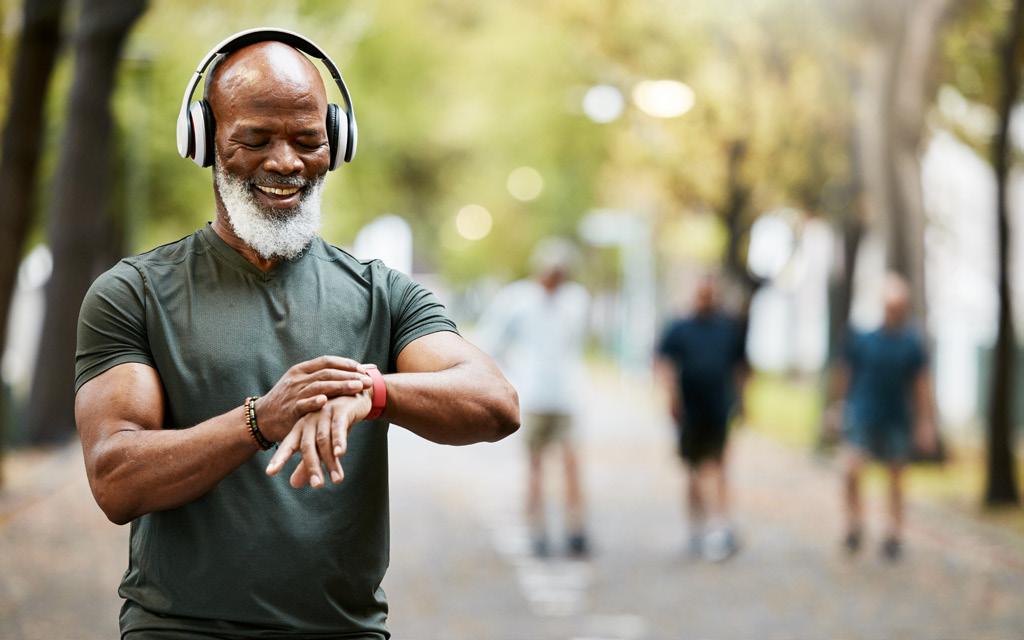
Healthy living means avoiding the inevitable for as long as possible, so let’s start at the end and work backwards. To understand the keys to better living, we start by examining the statistics about dying.
These are the results for all men in the U.S. across all age groups combined. When we consider men at different stages of life, their risks change:
• Men under the age of 44 are much more likely to die of unintentional injuries than older men.
• The No. 1 cause of death in men 45 to 84 is cancer and the No. 2 cause of death is heart disease. Once men reach 85, those statistics reverse. Men over 85 are more likely to die of heart disease than cancer.
• Suicide is the second leading cause of death in men under the age of 44. When men reach 45, suicide drops to the No. 6 cause of
death, and from 65 on it doesn’t even rank in the top 10.
• The No. 10 cause of death for men under 19 is stroke. Between the ages of 20 and 64, stroke moves to the No. 8 cause of death, beginning a slow progression toward the top of the list. For men aged 65 and older, stroke is the fourth leading cause of death.
• Parkinson’s and Alzheimer’s don’t make the top 10 causes of death in men until age 65. Diabetes poses the highest risk of death to men between the ages of 45 and 84.
From these statistics, we can conclude that young men tend to make dangerous choices, men in their middle years need to watch out for disease and that once a man reaches his mid 80s, he’s well on his way to living a long life.
Knowing what you’re up against at any age can help you focus on the areas you need to manage to achieve a long and healthy life.

According to the American Cancer Society, the most common cancers in men are prostate, colorectal, lung and skin. These are the most important cancer screenings to fit into your busy schedule:
PSA blood tests for prostate cancer annually beginning around age 40
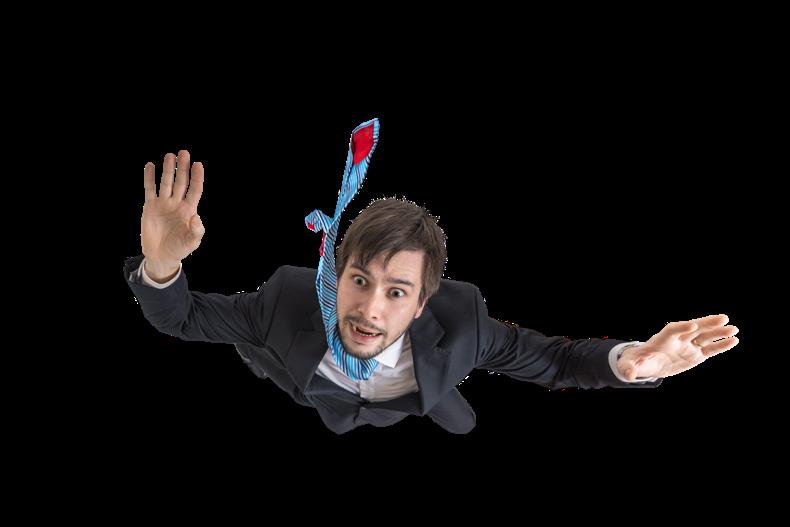
• Try balance and strength training exercises
• Fall-proof your home
Colonoscopy every ten years beginning at age 45
CT scan for lung cancer, if you currently smoke, annually from age 50 to 80
Skin check by a dermatologist annually from age 35 to 75
Testosterone is the hormone that creates the characteristics of masculinity, from facial hair and muscle strength to penis development and sperm production, but it’s not all about sex and reproduction. Throughout a man’s life, testosterone levels can change and a ect di erent systems in the body.
Men may begin experiencing a slow decline in their testosterone levels around age 30, a stage of life referred to as andropause. This process is similar to what women experience during menopause, though it manifests di erently. Symptoms men may experience sometime after their 30th birthday include:
• Decreased energy
• Trouble focusing
• Di culty building and maintaining muscle mass
• Erectile disfunction
• Decreased libido
As men progress through andropause, their symptoms may be so gradual that they don’t even notice them at first. Men can also experience night sweats, insomnia and mood swings, like their female peers, but these symptoms tend to be less pronounced and don’t necessarily appear at a set age.
• Stand up slowly
• Choose the right footwear
• Report any falls to your doctor
Naturally decreasing testosterone levels in men as they age may result in unexpected medical issues.
“Around age 45, that ability to eat three hotdogs and a coke in one sitting and not gain weight is over,” Amanda Gaskin, APRN, points out.
Weight gain is one of the most common health issues she sees in men in her practice. Declining testosterone levels and slowing metabolism can cause men to struggle with weight control and more.
Many men carry that excess weight in the front, around the belly area, which puts pressure on certain blood vessels. Decreased blood flow from weight gain can lead to another common male medical issue, erectile disfunction (ED).
“It’s not necessarily a case of diminished sex drive,” Amanda explains. “The thoughts are there but the body doesn’t show up.”
ED may not be the only consequence of low testosterone weight gain, according to experts at Johns Hopkins. Low testosterone, evidenced by reduced sexual performance, can be a risk factor for heart disease.
That “beer belly” could be doing more than ruining your sex life. It can be an indicator of high blwood sugar and unhealthy cholesterol levels. Taken together, these are all signs you should be checked for heart disease.

While men are generally at risk of heart disease from age 50 on, ED provides one of the few early warning signs. The penis, like the heart, is a vascular organ, but with smaller arteries. According to experts at Johns Hopkins, arterial damage shows up in these smaller arteries months, if not years, before it is evident in the heart.
Men who experience ED in their 40s have an elevated risk (up to 80%) of developing heart disease within the next ten years.
The most common forms of heart disease involve restricted flow of blood and oxygen to the heart muscle. A buildup of substances in the arteries referred to as plaque may begin slowly. If undetected and untreated, a complete blockage could occur and result in a heart attack.

Chest pain is the most common sign of heart attack for men.

prostate issue men face. There may no early warning signs, so annual screenings are important.
“There are new treatment options for prostate cancer where we can avoid radiation and surgery, but we need to detect the cancer early,” notes Dr. Sijo J. Parekattil, medical director at Avant Concierge Urology in Winter Garden.
ED can be a warning sign of blood vessel problems that could be caused by diabetes. If diabetes is not controlled by diet and exercise or medical intervention, it can cause damage to blood vessels and nerves. Those small arteries and nerves in the penis can be among the first a ected.
Low testosterone levels in men are also linked to an increased risk of diabetes according to the American Diabetes Association. In men with low testosterone, blood sugar spikes and remains high longer after a meal. The pancreas has to work harder to produce insulin to regulate blood sugar. According to Healthline, eventually the pancreas can’t keep up with the amount of insulin needed, which results in diabetes.
Men are not always inclined to discuss changes in their sexual function with anyone, not even a doctor, but ED could be telling them there is a bigger problem.
Odds are not good for men when it comes to lung disease. Men are more likely to get lung cancer than women and less likely to survive it, according to the


Breathing should be easy at any age. According to the American Lung Association, you should consult your doctor if you experience any of these warning signs for lung disease:
• Chronic cough
• Shortness of breath
• Chronic mucus production
American Lung Association. The same is true for pneumonia.
The chances of dying from pneumonia are increased in men because they are less likely than women to seek treatment until symptoms are very severe. A 2019 Cleveland Clinic survey suggests that poor outcomes among men could blamed on their reluctance
• Wheezing
• Coughing up blood
• Chronic chest pain
to seek medical treatment and their propensity to withhold information to avoid dealing with a di cult diagnosis.
Along with lung cancer and pneumonia, men are more susceptible than women to mesothelioma, a rare type of lung cancer linked to asbestos exposure. Men over 65 who were

in the military or exposed to asbestos in blue-collar jobs are at the highest risk. Asbestos, declared a carcinogen in 1975, is a very specific pulmonary irritant.
Men exposed to general environmental irritants, smoking and many other factors are more likely than women to develop idiopathic pulmonary fibrosis and scarring of the lungs. IPF is a progressive disease that can be slowed but not reversed. Successful management of IPF relies on early intervention.
Breathe easy knowing that the single common factor in avoiding and surviving these lung diseases is early detection. Talk to your doctor honestly about symptoms you may be having. And don’t wait.
Is being a man part of the challenge?
You may know a man who pushes his physical limits all the time, still running 10 miles a day, pushing through the same workout he did back in college or taking on overtime hours every week at a backbreaking job.
Tammie Stone, MPT, director of physical therapy at Lake Centre for Rehab, notes that men often come in with overuse injuries.
“Aging and other health issues cause a deconditioning they may not be aware of until they sustain an injury doing something they’ve done all their adult lives,” she says. Sometimes the challenge in men’s health care is treating the overall man.
“I think it is an ego thing,” says Lavonda Goodson, CEO of The Estella Byrd Whitman Community Health Center in Ocala. “Men tend to act like they don’t need a doctor because there cannot be anything wrong with them — just because they are men.”
Treating men in physical therapy can be a challenge, especially among the aging population.
“We have patients at Lake Centre for Rehab who do not want to alter their daily activities despite being in pain,” says Tracey GoldsteinMarquez, DPT.
Aging and other health issues cause a deconditioning they may not be aware of until they sustain an injury doing something they’ve done all their adult lives.
—LAVONDA GOODSON
Men often get stuck in a negative mindset that therapy won’t help, and they just have to live with the pain if they want to continue activities they enjoy.
A man is more likely to talk about his symptoms with a male doctor, especially more intimate issues
like rectal bleeding or erectile dysfunction. But for most men, their instinct is to ignore the problem and deal with any resulting discomfort privately.
“As women, I believe our role in men’s health care starts at home. We need to help the men in our lives feel comfortable talking about their symptoms, their aches and pains,” Lavonda explains.
Many women try to step up and do the talking for their man, but this doesn’t solve the problem because the real issue is a man being disconnected from his own body.
Ultimately, men’s health care has to come from men. They have to direct and participate in their own care.
“We have to learn the real support that we o er our loved ones is moving them to the point of being able to speak up when something is wrong,” Lavonda concludes.
It’s not easy to cover men’s mental health issues because talking about how they feel seems to go against the uno cial male code of conduct. Despite all the advances we’ve made since The Dark Ages, there is still a stigma surrounding men who allow themselves to experience emotion— and then talk about it.
The most basic male stereotype – that men don’t cry – often leads men into a mental health crisis. The common professional belief is that emotions are meant to be felt, which is how they are released. Suppressing emotions can cause a variety of physical and mental health issues over time.
Whether they’re willing to talk about it or not, men’s most common mental health issues are loneliness, anxiety and addiction.

Last year, the surgeon general put out an advisory referring to isolation and loneliness as a public health crisis in our country, warning that lacking connections can be comparable to smoking in increasing the risk of premature death.
You might be surprised to learn that men may be even more likely to struggle with loneliness than women, especially if your man appears rather independent . . . the lone wolf type. In fact, men often use isolation to avoid talking about their feelings or facing what’s really bothering them.
Dwight Bain, a licensed mental health counselor in Winter Park,
suggests to ask about stress or sleep if you want to get a guy talking.
“If you ask about depression or anxiety, he usually won’t have anything to say,” he says.
Dwight recommends not asking the man in your life about his feelings directly, unless you want to be confronted with anger, the one emotion most men feel comfortable expressing. Instead, Dwight suggests taking a softer approach that could help lead your man to defining his own feelings.
If a man felt comfortable talking about his feelings, he might say, “Why shouldn’t I feel anxious?!” Men often feel pressure managing a career, marriage and family
obligations. When you add to that general angst over the economy, national and world a airs, anxiety seems inevitable.
In addition to isolating themselves to avoid talking about their feelings, men tend to adopt escapist behaviors to avoid endlessly thinking about their problems or feeling those dreaded emotions. Behavior like spending long hours at work or working out can be masking anxiety or depression according to the Anxiety & Depression Association of America.
What starts out as a way to avoid dealing with issues can turn into a bigger problem.
“Video games, porn, alcohol and other addictions can often be traced back to the need for a simple diversion from the ruminating,” Dwight explains. Ruminating or brooding doesn’t lead to solutions, and those escapist behaviors can easily turn into addictions.
For most people, there is a fine line between alcohol use and alcohol abuse. It is still the most socially accepted drug, especially for the current demographic of retirees. In most areas of the country, alcohol is legal, available and relatively inexpensive. A sixpack of beer is cheaper than a fast-food meal.
Retirees might be particularly susceptible to addiction now that their responsibilities are few and their time is their own.
“Substance abuse is a means of escape,” Dwight says. “The key is figuring out what problems you are trying to avoid.”
The roots of addiction are always there. You grew up with them, maybe in your genetics, maybe in your environment, maybe among your peers. Using
substances to escape emotions is where things can really go wrong.
Life is di cult. Relationships are work. Avoidance doesn’t solve the problem and escaping could cause more problems. Now what?
Try counseling. All the cool kids are doing it. These celebrities, and many others, have publicly talked about their mental health struggles and the importance of getting help:
• Dwayne “The Rock” Johnson
• Tom Brady
• Bruce Springsteen
• Justin Bieber
• Jay-Z
• Prince Harry
• John Ham
• Brad Pitt
• Robert Downey Jr.
• Ryan Reynolds
If you’re not ready to go the therapy route, these healthy lifestyle tips may help you improve your mental health on your own:
• Connect with at least one person in real life every day.
• Limit your exposure to news. Try replacing 30 minutes of your favorite news broadcast with a half-hour comedy show.
• Make sleep a priority. It is easier to deal with emotions when you are well rested.
• Limit ca eine, nicotine and alcohol use.
• Try yoga or Thai Chi to reduce stress.
• Don’t be afraid to seek professional help.
Spirituality is an important element in a healthy lifestyle, but men often ignore this part of life. They tend to get caught up in the quest for professional and financial achievement and forget about their spiritual identity. Without a well-balanced spiritual side, men can feel empty, over-stressed and undervalued.
Many men assume that spirituality is not traditionally a male trait, and therein lies the problem, according to Seth Mulford, associate pastor at
Grace Bible Baptist Church in Leesburg. Men are often raised to believe they need to be strong and independent, and that seems antithetical to reliance on a spiritual being for guidance and support.
Grace Bible Baptist Church Pastor George Mulford explains that it’s not unusual for men to struggle to find their spiritual identity.
"I wasn’t a follower of Christ at one time in my life,” he says. “It wasn’t until I came to know Jesus Christ that my life made sense.”

Many men assume that spirituality is not traditionally a male trait.
George and Seth, the father-son spiritual team, offer what they believe men need to know to get their spiritual lives on track:
Jesus was a tough guy who worked with his hands, stood up for his friends and sacrificed for a cause he believed in. Jesus is an excellent role model, not a crutch.
Your legacy is not just your financial worth. You can work on building a legacy of service to others at any age. Making a di erence in someone’s life brings fulfillment.
Your spirituality is expressed in your relationships. The things you provide for your family are not a measure of your love. Rather, the time you spend with them building those relationships is how they will really feel your love.
You can be a financial success and live a deeply spiritual life at the same time. You just need to make room for Christ in your life. Try applying the discipline that helped you grow your career to your spiritual growth.
Friends are an important part of your life, even if you think you’re a loner. Finding the right kind of friends can help you achieve your spiritual goals.

There are many avenues you can choose when you’re ready to boost your spirituality. Start by visiting your local church and connecting with members of the congregation. The denomination is not important. Sometimes you need to experience a di erent perspective on the word of God to truly hear the message meant for you.
Many churches and community centers host men’s groups, which are an excellent way to meet others figuring out their spiritual paths just like you. Whether the focus is Bible study, relationship guidance or social interaction, a group could provide you with mentors and role models.
Spirituality doesn’t have to remain inside the four walls of a church. Consider taking a few days to concentrate on your spirituality on a retreat. There are faith-based retreats for men in Florida and across the U.S. You might be interested in one centered on emotional healing, service to others or simply deepening your faith.
Men often feel pressured to be the provider. They take on the responsibility for earning the money, buying things and managing investments to sustain their family, even after they’re gone. (By gone, we mean dead, not up and left because they couldn’t take it anymore.)
Juggling all this responsibility leaves men open to these common financial mistakes:
Prior to taking on the responsibilities of raising a family, men are not always focused on saving money and building credit they’ll need for a house and other necessary purchases.
“I see a lot of men’s credit reports filled with expensive toys,” says mortgage broker Ana Germeroth. “They don’t realize how that throws o their debtto-income ratio, making it harder to get a mortgage on their first house.”
Owning a new boat or motorcycle may be fun, but making the purchase on credit could postpone really important investments. Instead, save your money and pay cash for recreational items. Only use your credit for purchases you can pay o within a couple months or for investments like income property.
Saving for retirement is a longterm project most men spend their entire careers focusing on. They talk about investment products, read account statements and listen to stock tips to maximize their retirement nest egg. When it comes to retirement planning, however,

they may forget to include their entire estate.
“Making sure your home is titled properly and any long-term health care needs are covered are all part of estate planning,” explains Craig Chandler, CEO of Chandler Wealth Management. Your estate includes your investments and cash, property, personal possessions and assets you have a controlling interest in. Your home and interests in your business may be significant portions of your estate. Planning for the bequest of all assets, payment of taxes and settlement of debts are important parts of estate planning.
financial
A lot of men handle all the financial decisions without involving anyone in the family. That’s fine…as long as the system works. If something happens to the head of household, the spouse can be left in the dark about how to carry on financially.
“It’s great when a man has the right investments to provide for his wife and family after his death, but he needs to let his wife in on
the plan, so she knows what to do when he is no longer there to make the decisions,” Craig says.
Craig recommends having a back-up plan in case you die before your wife. He says that working with a trusted financial advisor will make the transition smoother when your widow has to manage the estate, and it will give you peace of mind that you have all contingencies covered.
You worked hard so you could retire comfortably and spend time with your family, pursue hobbies or travel. Unless you enjoy spending your days analyzing investments and your nights agonizing over market slumps, why fret over your investments after you retire?
Many men spend their retirement years stressing over the markets, maybe because they did it for so long before they retired. Stress is not good for your health, and men often struggle to find healthy ways to deal with stress. A healthy solution for this type of stress is finding a financial advisor you trust and leaving the work up to him or her.
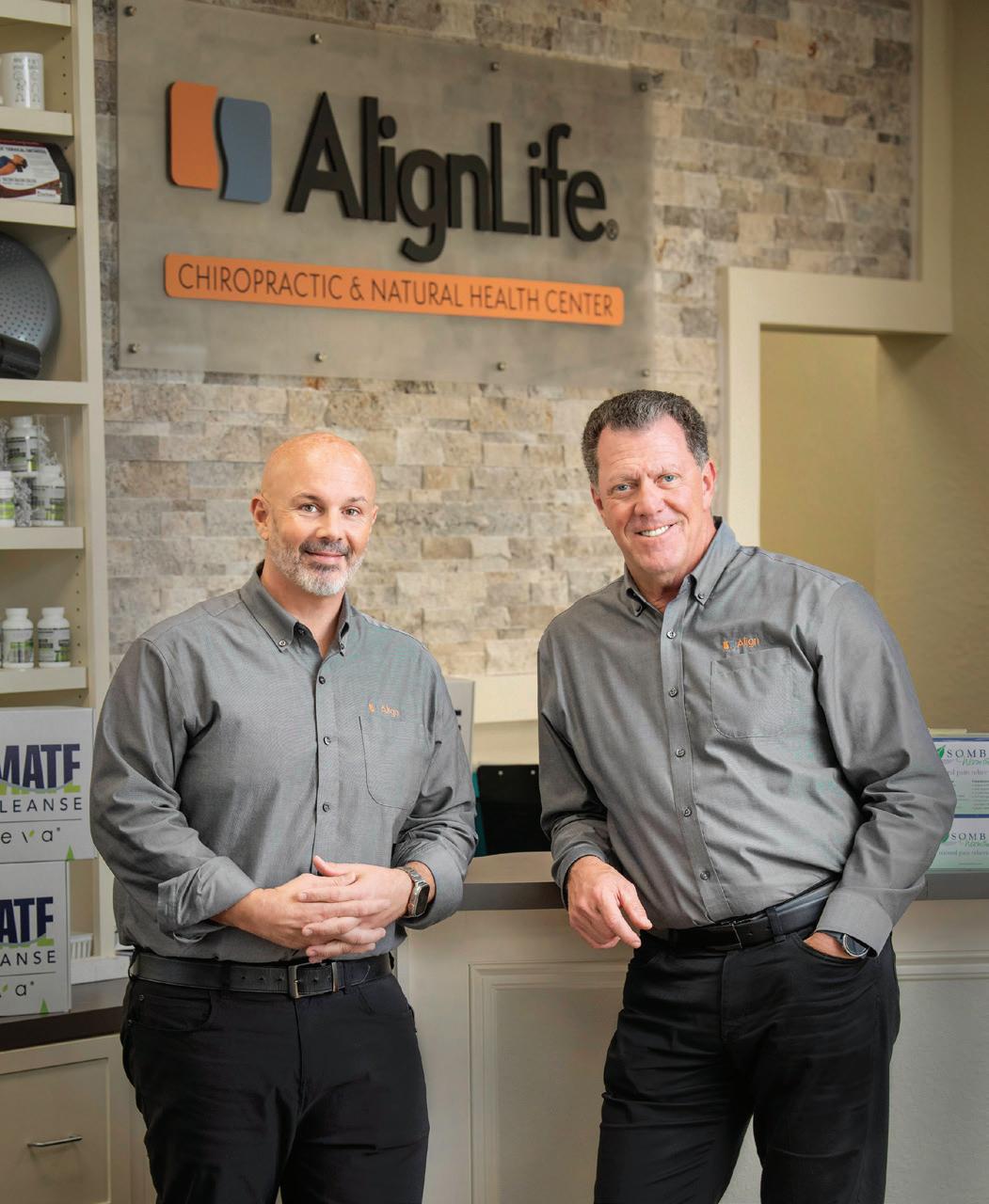


Dr. Renny Edelson and Dr. Gary Brodeur invite you to come by and see all of the new, exciting changes happening at each location.

Miss wearing your favorite pair of earrings?
At Central Florida Plastic Surgery, we can help! Stretched out or elongated earlobes caused by years of wearing heavy earrings or trauma can be fixed. Our relatively easy and painless in-office procedure can help you get back to enjoy wearing them once again. Call our office today to schedule your Complimentary Consultation!
In a younger face, we typically see the heart-shape or V-shape look of youth. With age, gravity, and loss of skin elasticity, we can observe the stigmata of old age: nasolabial and marionette lines, jowl formation, and a turkey gobbler neck.
We can reestablish that heart-shaped look of youth with Face and Neck Lift with Smartlipo. This procedure combines a face and neck lift with laser liposuction along the jawline and neck using Smartlipo technology. With today’s modern technology, you can truly look on the outside the way you feel on the inside. Call for your free consultation with Dr. Serra to find out if Face and Neck Lift with Smartlipo is right for A New You!

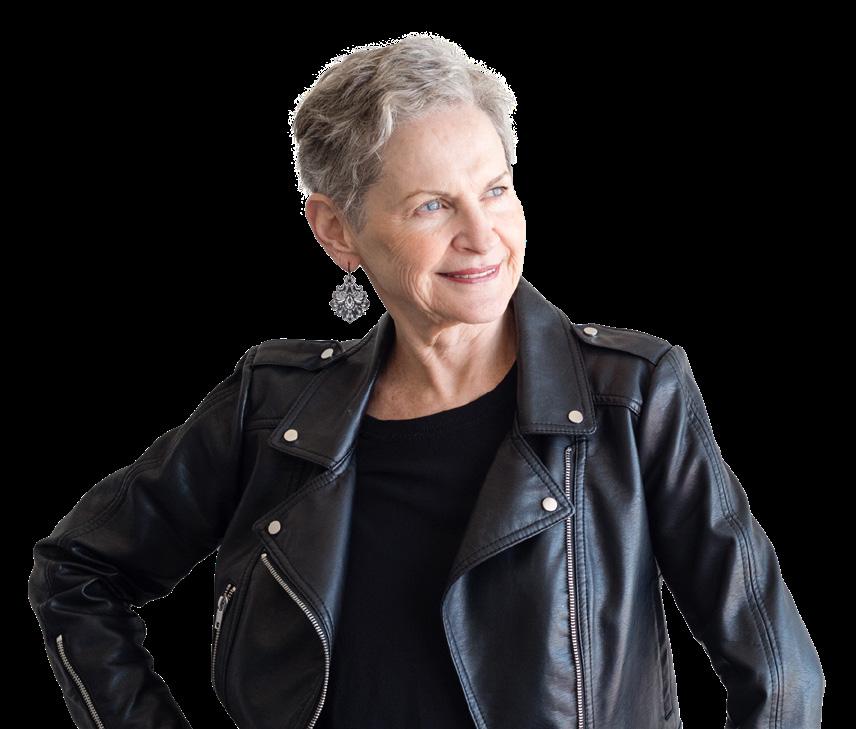



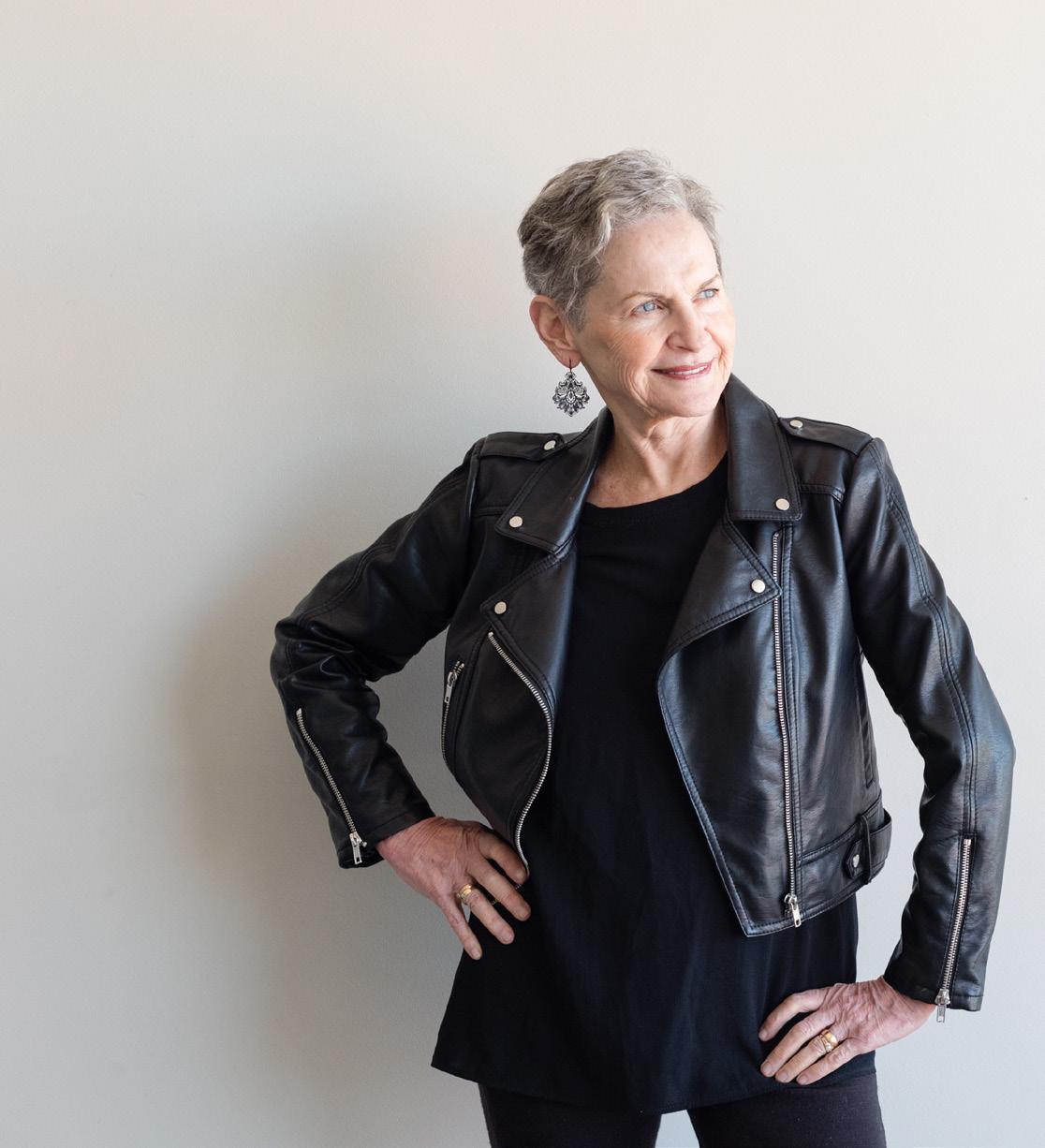












The SCUBA Gym’s underwater therapy sessions empower individuals to overcome challenges and find new strength.
Fred "Freddy" Rahming carefully approaches the edge of the Olympic-grade pool at the National Training Center in Clermont. For Freddy, a 51-year-old Eustis resident, this pool has become a sanctuary — a place where hope floats just beneath the surface.
Five years ago, a horrific near-fatal motorcycle accident left Freddy with severe injuries, including fractures to his pelvis, femur, and ankle, a broken hand and a crushed leg. These injuries not only diminished his mobility, but also his spirit. After seven months in a rehab facility, Freddy struggled to continue his recovery when his insurance stopped covering therapy. He faced years of physical decline until he found a lifeline at The SCUBA Gym, an underwater therapy program unlike any other in Florida.
"One year ago, I hit rock bottom," Freddy recalls. "I saw a post on Facebook from my old friend David about The SCUBA Gym, but I was skeptical. I finally decided to give it a try after David urged me to, again and again. I think it just took me reaching that bottom and saying, ‘What else you got to lose?’”
David Lawrence, founder of The SCUBA Gym, knows all too well the battles of recovery. Growing up in Eustis, David faced his own series of physical and emotional challenges. He lost both parents at a young age and nearly lost his own life in a motocross accident at 12, which led to years of rehabilitation.
"Those early experiences shaped me," David says. "I didn't understand it at the time, but they prepared me to guide my son, David Jr., through his journey and, eventually, many others."
Looking back, David and his wife Kimberly’s worlds were shaken in 2007 when their 11-year-old son was diagnosed with a brain
tumor. The surgery that saved David Jr.'s life, however, left him paralyzed from the neck down. Determined to find a way to help his son regain mobility, David turned to an old hobby of his –SCUBA diving – and discovered its therapeutic potential.
Little did they know how big of an impact it would have on so many levels.
“I believe lots of people go through hard times and although there is good that comes out of it, they often don’t see it in their lifetime. I feel blessed that my son David can see that what he
SCUBA stands for ‘SelfUnderwaterContained Breathing Apparatus.’ FUN FACT:

went through led to other people walking again, feeling better, living better lives. And my husband and I are blessed to be a part of this,” Kimberly says.
David says it’s hard to think back and see how one week, they had a happy, healthy son, and the next week, found out he had a brain tumor with a high probability of not making it through surgery.
Today, David Jr., now 28, is living proof of the program's success. Though still paralyzed on his left side, he can walk independently. He is also nearing graduation from the University of Central Florida
with degrees in chemistry and advanced mathematics and has become a therapy coach at The SCUBA Gym. Lovingly known as “SCUBA, Jr.,” he is grateful for his progress and enjoys helping others achieve similar breakthroughs.
“I spent two months with him in the hospital, night and day, and three years of physical and occupational therapies, several other therapies including SCUBA therapy and, of course, lots of prayers later, David Jr. now walks, runs and does everything he sets his mind to," David Sr. says.
The SCUBA Gym o ers an innovative form of therapy that uses the weightlessness of water to assist those with various types of disabilities, injuries and special needs improve mobility issues in ways that traditional therapies cannot. Participants are setup with complete SCUBA gear to make breathing underwater possible, as they complete customized workout sessions with coaches guiding them every step of the way.
This unique approach attracts participants eager for an alternative to conventional physical therapy from all over Florida to Clermont, where the program, operating as a nonprofit organization, rents pool space at the National Training Center. The SCUBA Gym, having partnered with and trained others to run the program, also operates in Australia and Oklahoma City and soon, will be o ered in Atlanta and Ocala.
Hosanna Boothman's story, shared by her mother, Nancy, highlights the profound potential of SCUBA therapy. At just 12 years old, Hosanna, now 21, su ered a massive stroke, leading to a below-the-knee amputation and significant neurological impairment. After moving to Silver Springs, Hosanna and her family discovered The SCUBA Gym through a news story. Intrigued


by the connection to hyperbaric therapy, which had previously helped Hosanna regain some speech abilities, they decided to try SCUBA therapy.
The team at The SCUBA Gym treated Hosanna with exceptional care and patience, which made her feel at home from her first session. Despite initial challenges, Hosanna showed remarkable progress underwater, where the reduced pressure allowed her to walk with more stability. The family is optimistic about Hosanna's future. They believe that the unique combination of physical and psychological benefits from SCUBA therapy will significantly aid her recovery.
"There’s something about the underwater environment that seemed to supercharge Hosanna's progress," Nancy says, adding that Hosanna is very excited about her participation in the program.

"After just one session, we saw improvements in her balance and strength that we hadn’t seen in years of traditional therapy."
Stephen Gates' experience further demonstrates the widereaching benefits of The SCUBA Gym. After su ering a blood clot stroke in January 2022, Stephen faced the daunting task of regaining mobility and function on his left side. Despite intensive therapy, progress was slow until his
Looking back, I see God's hand in everything. The pain and challenges I faced were preparing me to help my son and, in turn, help others.
—DAVID LAWRENCE
son-in-law, who volunteered at The SCUBA Gym, introduced him to the program.
After starting SCUBA therapy in October 2023, Stephen has seen notable improvements.
The sense of community and the encouragement from both the sta and fellow participants at The SCUBA Gym fostered a positive and motivating atmosphere. His mental and emotional health also improved as he regained hope and a sense of purpose through the structured and challenging exercises.
“My stamina has gradually gotten a lot better. I feel like I'm getting my fingers unwrapped and my spasticity is under control,” Stephen says. “From what I’ve experienced and from all the people I've talked to, it really works wonders in a considerably quick amount of time and it’s nice because you have a lot of support.”
David's dedication to helping others is evident in every aspect of The SCUBA Gym. Individualized sessions provide one-on-one support that ensures that each participant gets the most out of their time in the water. Volunteer therapy coaches play a crucial role by bringing their own stories and experiences to inspire and assist those in the program every step of the way.
"Our volunteers are incredible," David says. "Many have been
with us for years, and they bring a personal touch that makes all the di erence. It's not just about the physical therapy—it's about creating a supportive community."
For David, The SCUBA Gym is more than a therapeutic program; it's a mission rooted in faith and resilience. He believes his life's trials were not in vain, but rather stepping stones leading him to a higher purpose.
"Looking back, I see God's hand in everything. The pain and challenges I faced were preparing me to help my son and, in turn, help others,” David reflects. “It's an incredible blessing to wake up every day and do this work."
Freddy says he also feels blessed to be able to get up every day— twice a week at The SCUBA Gym— and do the work. His first session was extremely challenging and he required significant assistance, but the experience sparked hope.
Over the next year, Freddy's commitment to the program paid o . He progressed from being wheelchair-bound to walking with a cane. He’s lost 130 pounds and his mobility, strength and mental health have improved dramatically. Freddy is grateful for David’s relentless persistence about trying SCUBA therapy because it’s helped him reclaim his independence.
"It's not just about walking again — it's about living again," Freddy says with a smile.
During a recent session, as Freddy prepares to enter the pool, he pauses to reflect on his recovery journey. What were once insurmountable challenges have now transformed into hope.
“Since getting back on my feet, I can’t even think of a down moment. I take on challenges and accept what it is, for what it is,” Freddy says. “I feel like there’s purpose in that I’m still here.”
“After my accident, I would just sit around moping. As big as I am, I would just cry, cry, cry and say, ‘Why did this happen to me?’ When you go from being independent to dependent, it’s like ‘whoa,’ but this has really given me hope, determination and the will to keep going and I’m really excited about my future.”
For more information about sessions or if interested in donating funds to The SCUBA Gym for gear, equipment and programming, please visit… thescubagym.com or call 407.920.3262.

The heart is a vital organ essential for pumping blood throughout the body, ensuring organs and tissues receive enough oxygen and nutrients to stay healthy and function properly. As part of the cardiovascular and circulatory system, maintaining heart health involves proactive measures to keep the heart muscle strong and healthy for a longer life.
Good heart health results from healthy eating, regular exercise, and routine medical check-ups to address potential issues early. These practices help prevent severe heart conditions.
According to the CDC, heart disease is the leading cause of death for both men and women, with one person dying every 36 seconds from the disease. The annual cost of managing heart conditions is about $219 billion. Heart disease encompasses more than heart attacks; it includes
coronary artery disease (CAD), heart infections, heart failure, angina, peripheral arterial disease (PAD), and more. Many of these conditions are manageable and not immediately life-threatening. However, maintaining heart health can reduce the risk of chronic conditions requiring long-term medication.
THREE KEY BENEFITS OF A HEALTHY HEART INCLUDE:
1. Lower Blood Pressure: Blood pressure measures the force of blood against artery walls. High blood pressure can damage organs, including the heart. Monitoring and maintaining a healthy blood pressure range (less than 120/80 mm Hg) reduces the risk of hypertension and heart failure.
2. Prevent High or Low Blood Sugar and Insulin Levels: Balanced blood
sugar levels are crucial for energy. High or low blood sugar can cause serious health issues. Diet plays a significant role in managing blood sugar. Consuming excessive sugar can lead to chronic conditions like diabetes, kidney failure, and heart disease.
3. Reduce the Risk of Heart Attacks: Proper blood flow to the heart is vital. Blockages from fat, cholesterol, or plaque can lead to heart attacks. Preventative measures, such as a healthy diet, regular exercise, and avoiding smoking and excessive alcohol, can reduce these risks. With expertise in several cardiac subspecialties and a state-of-theart facility equipped with advanced technology, the experienced and highly-trained providers at Lorven Heart & Cardiovascular Institute provide coordinated, comprehensive, and compassionate individualized care.
Lorven Heart and Vascular o ers comprehensive diagnostic and therapeutic cardiovascular services for our patients. Our board-certified cardiologists have extensive subspecialty training and experience, o ering state-of-the-art technologies allowing for a more personalized, ongoing evaluation and management of their cardiovascular care and needs. Most importantly, our team believes in personalized, caring and compassionate medicine.




We all deserve to live as comfortably as possible; however, when an accident, sudden illness or chronic condition takes hold of our lives, comfort may seem impossible or out of reach. In the past decade, hope for relief from acute pain and distressing symptoms has become a reality and within reach, thanks to a growing awareness in palliative or supportive care.
Supportive Care is specialized medical care for people with serious conditions. Its focus is to provide relief from the symptoms, pain, and stress that entails— whatever the cause or diagnosis. The goal is to improve quality of life for both the patient and the family.
This type of care is provided by a team of doctors, nurses, and other specialists, who collaborate with a patient’s primary doctor and/or specialist to provide an extra layer of
support. It is appropriate at any age and at any stage in a serious illness and can be o ered along with curative treatment.
As a holistic approach to care, it is about a person’s whole being, including family and loved ones. It is covered by Medicare, Medicaid and most private insurances. Those with advancing illness can deal with their situation without the added burden of debilitating pain or life-altering symptoms that prevent them from enjoying daily life.
The steady growth in this type of care is primarily in response to the increasing number of people with serious and chronic illness. People are living longer, but not necessarily better. The needs are many, placing overwhelming caregiving demands on families. We recognize these needs and are addressing their challenges through a strong partnership between patient, family and the
Carewell Supportive Care team. A consult is available through one’s own physician or by calling (352) 291-5881 for information about receiving services. They can request treatment if the outcome from surgery, accident or disease has left them in physical or mental distress.
Because patients are carefully regulated by their physicians in collaboration with experts on the Carewell Supportive Care team, they can rest assured that symptoms can be managed (most within 24-48 hours) and their condition monitored on an ongoing basis. Many go on to fully regain their lives.
The Carewell Supportive Care team has two medical directors and six APRNs. They conduct consults in hospitals, nursing homes, assisted living facilities and even private homes. Learn how Carewell Supportive Care can help: (352) 291-5881 or visit www.carewellsuportivecare.com.

A mother’s timeline of embracing summer with her children unravels as unexpected challenges arise.

My beautiful angels are out of school — every good, sweet mother’s dream! I’ve been missing them so much and I have so many wonderful plans for our precious time together now that they will be home all day. I’ve grown tired of the daily routine of getting the kids up, feeding them, making sure they are dressed appropriately — “No, I told you yesterday and the day before that you can’t wear that.” — Now it will just be fun times in the sun with the loves of my life — the little angels. There will be camps, crafts and day trips to waterparks. It’s time for fun.

The sibling rivalries are heating up a bit and that’s annoying, but look how cute they are with their summer tans and they are still happy. Okay, this is still pretty fun. We’ve got a vacation planned to the beach and summer camp at Skate World. Summer pool games are getting a little routine, but this is part of summer life that will soon be over anyway. It’s still good and it's only just now starting to get unbearably hot.
Oh God, it’s hot. “Do you want to go to the pool?” “No, it’s boring!” “Do you want to play outside?” “No, it’s hot.” “Are you sure you don’t want to go outside for an hour… or four?” Mommy is feeling a little ashamed of how much of her hair she has pulled out. She’s a little more ashamed of how much time her kids are spending in their air-conditioned rooms playing video games. Will the children ever love each other again? They’re so sick of their siblings that they go whole days without talking to them. They are missing their school friends. But summer’s not over, and there is pressure to think of something fun! I’m a stressed-out mom, and I’m ready to take a road trip going 90, heading north and never come back!
How many days until school starts Time to order new lunch boxes! The kids have outgrown their school clothes — time to go shopping! Here are those school supply lists. Soon we’ll peruse those four extra aisles at Walmart with all the notebooks and pencils and various paraphernalia strewn all about. All this means one thing. We only have to hold out a little longer before we can get the kids back into school so they don’t hurt each other. The little demons — I mean, angels — are ready, too.



Finally, in the last week of August, I drop them o in front of the school — the blessed school — where their sweet, smiling teacher waits to greet them warmly. I watch them disappear through the door in their new clothes with their new backpacks and their new lunch boxes lovingly filled with their favorite foods. I think, “Have a wonderful day, my little angels,” as I drive back to a peacefully empty house to do... whatever I want. I’ll start missing them again sometime just before Christmas. By January or February I’ll start planning next summer’s vacations and activities. But today is my day. I’m not doing ANYTHING!
Of course, the above account is about some other mom, not me, no way. But I thought I might include it
in case some of you moms worry or feel guilty that you may be ready for a break by the end of the summer. As a highly structured person, the most jarring and di cult part of summer is the comparative lack of routine. I used to homeschool my kids, so you’d think there wouldn’t be much di erence between summer and the school year. But, dear Lord, there is. What in the world do we do all day, every day? How do I keep them from simply entertaining themselves on devices?
And I know some people are talking about helicopter parenting and how back in the day (whenever that was) kids had freedom to run around and play in the city dump or wherever. But now we always
SABRINA CICERI EDITORIAL@AKERSMEDIAGROUP.COM
feel like we have to be with them all the time so someone doesn’t take them.
The fact is, this is all part of life and every mom goes through it. You know it, and I know it. If you are reading this at the beginning of the summer, you’re full of excitement and anticipation. If you’re reading at the end, you already feel guilty about your fantasy of a solo road trip (maybe the hubby can tag along, but don’t bring those kids— those precious angels can stay with grandma. I mean, they need some grandma time!)
What I want to say is, you’re a great mom. Take care of yourself. Your kids are blessed to have you!
Sabrina is a self-confessed go-getter, and owner/ founder of ‘Immunity Health,’ an evolutionary wellness center in Lady Lake. As published author of “If It’s Not One Thing It’s a Mother”, and having lovingly fostered and adopted many children over the years, it’s no surprise Sabrina and husband Joe were named the 2014 Foster Parents of the Year by Kids Central Inc.


Stephen Gates tears up as he talks about his 11 grandchildren.
That never happened before the stroke.
Before su ering a stroke in 2022, Stephen was a fun and a ectionate grandfather who enjoyed laughing, fishing, traveling and throwing a ball in the yard with his grandchildren. Since the stroke, he can’t get down on the floor and wrestle with the kids. He can’t pick them up. And he certainly can’t find anything to laugh about.
Loss of laughter is a common side e ect of strokes, which can occur at any age.
Hosanna Boothman was just a kid when she had a stroke in 2015. When the brave 12-year-old emerged from the hospital after undergoing a craniotomy and lower left leg amputation, she was partially paralyzed on her right side and only able to speak three words, “use the door.”
Right after the stroke, Hosanna would get frustrated and sad when her mother didn’t understand what she is trying to say. She experienced a level of frustration she never knew before as she tried to complete
routine tasks. Before her stroke, she was a carefree teenager.
A stroke is the interruption of blood supply to the brain, often resulting in damage, either temporary or permanent. Since the brain controls all motor functions, the more obvious results of a stroke may be paralysis and loss of speech. Damage to the brain can also have emotional and behavioral a ects that are not as evident.
Both Stephen and Hosanna experienced the sadness and frustration you might expect following a devastating medical incident — sad for abilities and opportunities lost and frustrated trying to learn to live with their new functional limitations.
“It wasn’t just a matter of the stroke damaging my body and brain, but losing the ability to live the life I was living,” Stephen laments.
Before the stroke, Stephen lived a very physical life. He enjoyed helping with remodeling work and doing projects like restoring an old wooden jungle gym and assembling it in his grandkids’ backyard.
“God gives us abilities to serve others. I am not an eloquent speaker; my talents are physical,”
explains Stephen, who was afraid he had lost his ability to serve God.
Hosanna’s mother, Nancy Boothman, brought God into the picture while Hosanna was still in the hospital. When Hosanna was at her worst — unconscious and on a ventilator — Nancy was advised to let her go. She was told Hosanna would never recognize her mother or father again. She would never talk or eat by herself.
“I didn’t want to take that decision into my own hands and always wonder ‘what if.’” Nancy explains. “I thank God I let Him take control of that, because she’s here now.”
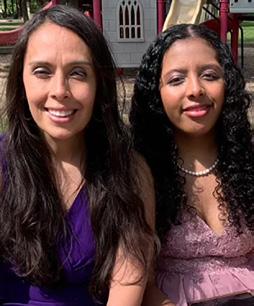


A couple weeks after his stroke, physical therapists tried to sit Stephen up on the edge of the hospital bed for his physical and occupational therapy evaluation, but he kept falling over. He had lost his upper core strength, as well as mobility in his left leg and right arm. Additionally, his speech was impaired and eating was a challenge.
“I thought of James 1:2-4, about being tested, and realized my stroke would become a complete test of my faith,” he says. “I was anxious, concerned and had doubt that I would be strong enough to endure this trial.”
Stephen turned a corner in his physical and spiritual recovery when he got home and could study the Bible uninterrupted. He came to understand how God really works in our lives through the scriptures.
“The gospel has a purpose, to help us through the most di cult parts of life,” Stephen says. “I let it teach me.”
Nancy’s teaching came through witnessing Hosanna’s determination. A strong lesson Nancy learned was not to give up;
CHRISTINE
just have faith. Hosanna sets goals and keeps trying with unwavering focus until she reaches them.
“She believes God helped her through, and He has a plan for her,” Nancy says.
Nancy sees stroke survivors as champions and points out the importance of family members keeping them motivated.
“We pick them up when they don’t want to keep going, and we do it over and over again because we love them,” Nancy says. “To me, stroke survivors are heroes.”
Hosanna achieved her goal of walking in her high school graduation ceremony in 2023, although she is still going to physical therapy to improve her motor skills.
“Seeing everything Hosanna has accomplished, I trust God even more now than I did before,” Nancy says.
Stephen is back to trusting God as well. He is improving physically and spiritually over time. He spends time with his grandchildren, talking rather than playing or building things, but that still gives him a chance to exercise his newfound abilities with which to serve God and share his faith with them.
ANDOLA CHRISTINE@AKERSMEDIAGROUP.COM
I command you: Be strong and steadfast! Do not fear nor be dismayed, for the Lord, your God, is with you wherever you go.
JOSHUA 1:9
Christine is a 30-year communication professional with extensive writing experience across all platforms and genres and a wide variety of industries. She enjoys learning about the people in our community and sharing information in a way that resonates with readers.


Happiness is a commonly used word, but the emotion is rarely achieved.
STORY: GINA HORAN
We seem to use the word “happy” a lot in our society.
There is happy hour, our happy place and Snoopy’s happy dance. We have Happy Meals and become happy campers. Disneyworld is the happiest place on earth and Finland has been named the happiest country seven years running. Even the Girl Scouts have a happiness badge.
But what is sustained, long-term happiness and how is it achieved? Is it an aspirational, lifelong pursuit, or are some people just built that way? The answer seems to be a combination of both.
The psychological and philosophical pursuit of happiness began in China, India and Greece nearly 2,500 years ago with Confucius, Buddha, Socrates and Aristotle. These philosophies moved through the Age of Enlightenment and continue to this day. Volumes of books trying to
crack the code of what produces enduring happiness fill stores and websites globally.
The study of chemical and biological factors, however, is relatively new, and involves the brain, neurotransmitters, endocrine glands and hormones like dopamine and serotonin. Some studies suggest that genetic factors count for 35-50% of happiness, which we were born with, while environmental e ects can be managed to overcome any chemical deficiencies.
In 1991, Dr. Martin Seligman, the father of positive psychology, said that optimists who are confronted with the same hard knocks as pessimists tend to believe that defeat and misfortune are temporary challenges. Dr. Seligman contended that even pessimists can improve their lives with daily practice.
Seligman came up with the PERMA+ model, an evidence-
based approach to improve “happiness” and decrease anxiety, depression and stress. Many activities can be used to systematically increase:
Positive emotion Engagement Relationships Meaning Accomplishments
You can boost hormone levels with positive lifestyle practices involving your diet, exercise, and meditation to improve mood. Studies show that within five minutes of cardiovascular exercise, you can feel happier as your brain releases serotonin, dopamine and other neurotransmitters. Even just walking can have a positive e ect. Look for better ways to sleep and take time out to quiet your outside influences at least once a day.
Buddhism teaches that kindness and compassion are important in the pursuit of happiness. In Howard C. Cutler’s book “The Art of Happiness,” the Dalai Lama explains: “There is an inextricable link between one’s personal happiness and kindness. Increased compassion leads to even greater happiness.”
In other words, happier people tend to be more caring and willing to reach out and help others. Happy people deliberately cultivate greater kindness and compassion, which produces a greater sense of happiness and well-being.
Leesburg cardiovascular surgeon Jose Rosado, who was born in Puerto Rico, says he has always been a happy positive person.
“My parents reminded us that if there was some food on our plate, clothes on our back and a roof over our heads, life was good,” Dr. Rosado says.
Today, he creates his own happiness with a positive state of mind.
“I believe you choose to be happy no matter how you are or where you are, because somebody out there has it worse than you, and you always have to be thankful,” Dr. Rosado says.
He cites nature as a big inspiration. Little things often make him smile.
“Just waking up in the morning looking at the sunrise is inspiring,” Dr. Rosado says. “Or if it's foggy, the mist blankets the field and if it rains, the raindrops will rejuvenate everything so at the end, having had a full day, knowing that all is well with my soul, is happiness to me.”

Local nurse practitioner Amanda Gaskin is known for her positive attitude and attributes her spirit to her family.
“I was born into a family that poured love into me from the getgo,” she says. “My parents were high school sweethearts and I am the first product of that love.”
The name Amanda means worthy of love or loveable. She believes her foundation for success was set when her mother named her.
Her faith is also a hallmark of her daily positivity.
“My faith in God is also the explanation for my happiness,” she says.
“My life has been full of adversity but I have always known that my help comes from above.”
Amanda works hard to focus on the positive while viewing negatives as learning experiences.
“In my work as a nurse practitioner I hear the worst of the worst stories from my patients, so it helps me to appreciate all the good in my life and I do,” she says.
GINA HORAN GINA@AKERSMEDIAGROUP.COM

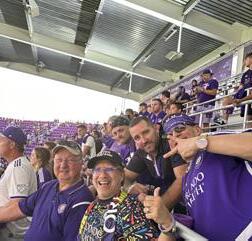


Gina moved to Central Florida in August of 2021 and has a background as a features writer, morning radio show cohost and producer. She covered travel, events and the restaurant scene for television and her passions include road trips, history books, baseball and landing in a new city with no map or guidebook. She lives in Oxford with her cat.


Burnout has become a significant concern in today’s fast-paced and demanding world. It a ects people across various professions and lifestyles, often resulting from chronic stress and the inability to balance work and personal life. As a medical provider, I have witnessed the toll burnout can take on my colleagues, myself, and my clients. Understanding the causes and consequences of burnout and key lifestyle modifications for being resilient, are essential for maintaining mental and physical health in these modern times. Burnout is more than just feeling stressed; it’s a condition that can severely impact your quality of life and overall health. And if left unaddressed, it can lead to more serious mental health issues such as depression and anxiety, and physical health problems like cardiovascular disease and a weakened immune system.
Signs of Burnout:
• Exhaustion – chronic fatigue and lack of energy
• Detachment – feeling disconnected from work or activities that you used to enjoy
• Ine ciency – decreased performance or productivity
• Cynicism – developing a negative, detached outlook towards tasks, colleagues, and even friends
• Physical symptoms – headaches, stomach issues, and sleep disturbances
One way I coach our clients on mitigating the risk of burnout is to underscore the importance of resilience and key necessary lifestyle modifications needed to resist burnout. The first key step being to understand the di erences between these two states and their impacts on their well-being. Burnout and resilience are two sides of the same coin when it comes to dealing with stress and adversity. While burnout represents a state of exhaustion and disillusionment, resilience embodies the ability to adapt and recover. Resilience is not a trait that people either have or do not have; it involves behaviors, thoughts, and actions that can be learned and developed in anyone desiring to experience resilience, stronger immune system, and a state of thriving not just surviving.
Characteristics of Resilience:
• Optimism – viewing challenges as opportunities for growth
• Emotional Regulation – managing emotions e ectively to handle stress
• Flexibility – adapting to new circumstances and changing plans as needed
• Problem-Solving Skills – proactively addressing issues rather than feeling overwhelmed
• Strong Support Networks – relying on relationships for emotional and practical support
The good news is that resilience can be developed and strengthened with practice. Given the protective role of resilience, it’s important to adopt strategies to enhance this trait.
Resilience Strategies:
• Gratitude – develop a practice of being grateful
• Practice Mindfulness –focus on being present and aware of what you are sensing and feeling in the moment
• Get Enough Sleep – 7-8 hours a night
• Exercise – just 30 minutes a day can make a huge di erence
• Take care of yourself – such as proper nutrition and lifestyle changes. Fuel your body with quality nutrition
• Try relaxation activities – meditation, yoga, deep breathing exercises
• Don’t be afraid to seek professional care
Understanding the relationship between burnout and resilience is essential for maintaining both your mental and physical health. By adapting strategies to build your resilience, you can better manage stress, maintain your health, and thrive in the face of challenges. Developing resilience is not just about bouncing back from adversity; it’s about growing stronger through the experience.
Lori Esarey, a certified family nurse practitioner since 1995, founded Total Nutrition and Therapeutics in 2006, backed by her strong belief that disease could be managed with proper nutrition. Today, Lori is charged with helping patients pinpoint and reverse unhealthy lifestyle habits to live well.


Dr. Isaac Deas delves into prevalent fears among men and explores e ective strategies for conquering them.

Unveiling men’s common fears through the lens of masculinity.
STORY: ROXANNE BROWN

Fear is a complex and multifaceted emotion that can stem from a variety of sources, a ecting individuals in profoundly di erent ways.

Dr. Isaac Deas, a licensed mental health counselor with Deas Consulting in Tavares and pastor of New Bethel Community Church in Summerfield, has extensive experience helping people navigate their fears.
Here he provides a comprehensive and insightful perspective on the types of fears men commonly face and o ers strategies for overcoming them through perseverance.
Personally speaking, Isaac, having overcome a serious drug addiction, recounts the subsequent loss of respect and stability during his struggles. He says for a long time following his recovery, he feared that the people in his life wouldn’t believe he was clean or truly sorry for all he put them through. Isaac says his path to recovery involved confronting
his fears, seeking support and gradually rebuilding trust and self-esteem.
Isaac identifies several specific fears that are particularly common among men. These include:
Financial fear: This fear revolves around the uncertainty of financial stability. Many men worry about their ability to provide for their families, maintain their lifestyle or achieve financial independence. The pressure to be the primary breadwinner can amplify this fear, especially in times of economic instability.
Self-esteem fear: Rooted in feelings of inadequacy, this fear is often about not measuring up
to societal or personal standards. Men might fear they are not as good as their peers in various aspects, including career, physical appearance, or intellectual abilities.
Fear of failure: This encompasses professional setbacks, financial instability and personal shortcomings. The societal pressure to succeed can make failure seem catastrophic.
Fear of rejection: Whether in romantic relationships, friendships or social settings, the fear of not being accepted or valued can be crippling.
Fear of losing control: Men often fear losing control over their lives, whether through illness, financial crisis or relationship breakdowns. This fear is linked to the traditional


role of men as protectors and providers.
Fear of sexual performance:
One of the most profound fears men face is the fear of sexual performance. This fear can be particularly damaging to intimate relationships and personal identity. Isaac explains that performance anxiety often stems from societal expectations and personal insecurities. Men fear that if they cannot perform sexually, their partner may seek satisfaction elsewhere. This anxiety can create a vicious cycle in which fear leads to poor performance, which in turn reinforces the fear.
According to Isaac, many of these fears are deeply rooted in childhood experiences and societal expectations. The absence of a positive male role model, such as a father or stepfather, can leave men without a clear understanding of what it means to be a man. This gap can lead to insecurity and fear of not fulfilling perceived roles and responsibilities of manhood.
Isaac points out that men who were raised primarily by women might lack exposure to male perspectives on handling fears and challenges. This upbringing can result in men feeling insecure and more likely to seek validation from relationships with women. And that sometimes leads to dysfunctional dynamics.
Isaac says that society promotes the mindset that men must be strong, stoic and self-reliant. Admitting fear is seen as a sign of weakness that prevents many men from seeking help. Isaac stresses the importance of
creating safe spaces where men can express their fears without judgment. Counseling and therapy can provide a confidential and supportive environment for men to explore their fears, which plays a vital role in the process.
Society promotes the mindset that men must be strong, stoic and self-reliant.
“Oftentimes, what I tell men I counsel is, ‘You don’t have to be ashamed.’ And I think a lot of times men won’t share because they think their fears are going to be told to someone else,” Isaac says. “We are guarding our confidentiality and if we are open with you, the worst is that it be passed along and we hear about it, because our trust goes out the window for everybody.”
He also says men and women think and process things di erently, which can sometimes be a problem, especially if a man is seeking support from, or being confronted by, their wife or companion.
ROXANNE BROWN ROXANNE@AKERSMEDIAGROUP.COM
“Sometimes a man may come in with his wife, and I’ll ask her about things, too. I’ll say, ‘Okay, tell me what’s going on,’ and she says it, and then I turn to the man and say, ‘Don’t respond to what she said, just tell me what you heard her say,’” Isaac explains. “Usually, he is so far o , it’s like, ‘What were you listening to? Where were you?’”
Isaac suggests a multifaceted approach to conquer unnecessary fears:
Transparency and communication: Gain relief and reduce the power of fears by openly discussing fears with trusted individuals.
Prioritization: Identify the most pressing fears and tackle them one at a time. This approach prevents overwhelm and fosters a sense of accomplishment.
Professional help: Therapists and counselors can o er strategies to manage fear and anxiety. Their role is not to provide answers but to guide individuals through their emotional journeys.
Support networks: Building connections with other men who faced similar challenges can provide support and encouragement. Support groups and mentorship can be invaluable.
Self-care and healthy living: Maintaining a healthy lifestyle, including regular exercise, proper nutrition and stress management, can reduce overall anxiety and improve mental health.
Roxanne Brown is an award-winning journalist with 20 years of experience in the industry. She joined Akers Media as a Sta Writer and Copy Editor in July 2020 after 16 years as a local newspaper reporter. Roxanne lives in Clermont with her family, and outside of work, enjoys reading, sunsets, music, history, and Zumba.



PRIVATE DUTY
SERVICES
Meal planning/preparation
Light cleaning
Errands and laundry
Bathing, dressing and grooming
Hourly nursing visits
Post-surgical care
Home health aides
Alzheimer’s care
and more!

When it comes to managing your finances, it is important to work with a fiduciary who will do what is in your financial best interest.

The money you have when you retire is your fi nal earnings and needs to be protected. It is the role of the fi duciary to make sure your best interest is put fi rst, all the time.
“Retirees are especially vulnerable to working with fi nancial advisors who do not have their best interests in mind,” says Craig Chandler, founder of Chandler Wealth Management.
Someone can be a fi duciary and still give you the wrong advice or steer you towards investments that provide more benefi t for them than you.
When I talk to new clients about their goals and then look at their portfolios, they don’t match up,” Craig explains. “When clients say they don’t want to take any risk, but their portfolio is all in highrisk investments, I know someone wasn’t advising them properly.”
MORE THAN JUST A FIDUCIARY
Your fi nancial advisor should explain the strategy to you, and you need to understand why his or her recommendations are best for you.
“You can’t just tell your fi nancial advisor you trust him or her. That’s not good enough. You have to understand what’s happening with your money,” Craig explains. “If the advisor can’t explain it in terms you can understand, maybe he doesn’t understand it well enough himself.”
You should feel free to ask questions, something you can’t do if you don’t understand the strategy. Don’t be afraid to get a second opinion to confi rm you have the plan that is going to take care of you!
“No matter who manages your money, don’t just settle for what they o er,” Craig

855.667.4752
chandlerwm.com

says. “You deserve to work with an advisor who is dedicated to helping you achieve your goals.”

Debating generational di erences in childhood financial responsibility: A dad and daughter’s perspective.
STORY: CINDY PETERSON

When Bitcoin first hit the scene in 2009, people could buy 5,050 Bitcoins for $5.02 via PayPal, or $0.00099 per Bitcoin. Being so cheap and thinking he was getting a deal, my husband’s co-worker used a Bitcoin to purchase an adult site. Today, that Bitcoin is worth $69,293.34. I hope it was worth it. In the digital age, the concept of money is undergoing a transformation that could reshape our economic landscape. As Forbes reports, the rise of cryptocurrencies like Bitcoin (BTC), Ethereum (ETH) and Central Bank Digital Currencies (CBDCs) in more than 100 countries signals a pivotal shift from physical to digital money.
Digital currency represents money in electronic form that exists solely within digital platforms,
unlike traditional money, which circulates in both physical and electronic forms. This means you cannot convert digital currencies into physical form like you can with the money in your bank account.
Cryptocurrency: The most recognized form of digital currency. It is a type of distributed ledger technology known as blockchain.
Stablecoins: Cryptocurrencies designed to minimize price volatility by being pegged to a reserve asset such as the U.S. dollar.
Central Bank Digital Currencies (CBDCs): State-issued and regulated by national central banks, CBDCs provide a digital alternative to traditional money.
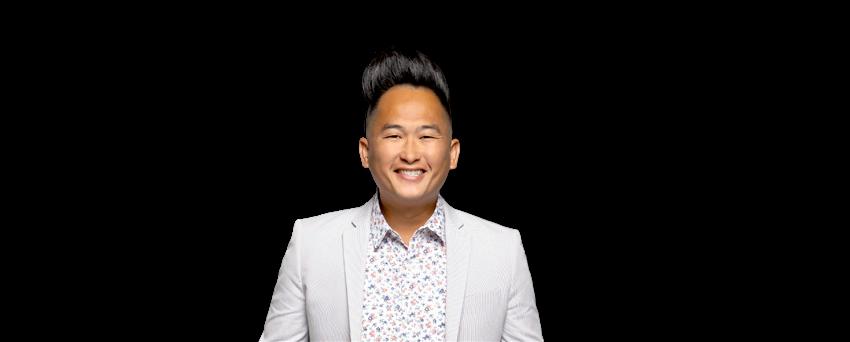
Speed and Accessibility: Digital currencies can be transferred almost instantly and are accessible 24/7, unlike traditional bank transfers.
Reduced Costs: They promise lower transaction fees, particularly in international transfers and those outside the traditional banking system.
The shift to digital currency is not without challenges. The learning curve for new users, the need for secure digital storage solutions and the volatility seen in cryptocurrencies are significant barriers. Additionally, according to Forbes, the energy-intensive


nature of cryptocurrencies like Bitcoin raises environmental concerns, although this would be less of an issue with centrally controlled CBDCs.
Duct-Man Mechanical owner Quan Nguyen is a leader in his industry, but he’s much more than your average businessman. He’s always looking for the next opportunity to create, grow and succeed — and digital currency fits the bill.
Quan's journey into cryptocurrency began with Bitcoin.
"We first invested in Bitcoin, however I did not buy it at a few hundred dollars,” he says. “We finally purchased it when it was $10,000 in 2020 and held on to it as the market fluctuated, and continue to buy and sell multiple coins to this day.”
This initial investment marked the beginning of a learning curve and a strategic evolution in his approach to digital currencies. Today, Quan views cryptocurrency as a long-term investment.
"We are in it for the long haul now, given what we have learned the last five years,” he says. “It's all about riding the highs, to riding the lows, and know that if we truly
believe that it's going to be there for a long time, we have to make sure that we are following the layout that we want to follow.”
Despite the enthusiasm, Quan remains skeptical about cryptocurrency becoming a universal medium of exchange, especially among di erent economic classes.
“Unfortunately, I do not believe that crypto will be the next monetary value that will be used with everyone,” he says. “I believe in the near future, upper middle class may do this, but since it's not backed by anything, the middle and lower class will still be utilizing cash.”
Quan says several challenges and security concerns associated with cryptocurrencies exist. At the top of his list: the lack of backing by physical assets, the prevalence of scams and platform complexities.
“Some of the challenges are not having the currencies backed by anything like cash is to gold,” he says. “There are a lot of scams out there. You have to make sure you trade on more knowledgeable platforms like Kraken, Coinbase, Cashapp or even Robinhood.”
Looking forward, Quan is optimistic about the growth of cryptocurrencies, anticipating more widespread adoption and integration into financial systems.
CINDY PETERSON CINDY@AKERSMEDIAGROUP.COM
AS OF MAY 2024, THE TOP 10 MOST POPULAR CRYPTOCURRENCIES BY MARKET CAPITALIZATION ARE AS FOLLOWS:
BITCOIN (BTC): Known as the first cryptocurrency, Bitcoin remains the most valuable and widely recognized digital asset.
ETHEREUM (ETH): Ethereum is notable for its introduction of smart contracts, which allow decentralized applications to run on its blockchain.
TETHER (USDT): Tether is the most prominent stablecoin, pegged to the US dollar to maintain a stable value.
RIPPLE (XRP): Ripple aims to enhance the speed and reduce the costs of international transactions.
DOGECOIN (DOGE): Originally started as a meme, Dogecoin has gained popularity due to its community support and occasional backing by high-profile individuals like Elon Musk.
AVALANCHE (AVAX): Known for its high throughput and low transaction fees, Avalanche supports a variety of decentralized finance (DeFi) applications and has been gaining traction for its scalability.
QUANTUM RESISTANT LEDGER (QRL): This cryptocurrency focuses on security, specifically protecting against potential future threats from quantum computing.
NEAR PROTOCOL (NEAR): NEAR aims to address scalability and usability challenges in blockchain technology, facilitating the creation of decentralized applications that are as performant as traditional web apps.
POLKADOT (DOT): Designed to enable different blockchains to transfer messages and value in a trust-free fashion, Polkadot is aimed at making a web where our data is our own and isn't stored on a server owned by an intermediary company.
LITECOIN (LTC): Created as the "silver to Bitcoin’s gold," Litecoin offers faster transaction confirmation times and a different cryptographic algorithm compared to Bitcoin.
Cindy is a multimedia specialist in journalism, photography, and videography. She is the Digital Media Editor for Style Magazine and producer of the Healthy Living Podcast. She also produces for Beacon College’s Telly Award-winning PBS show, “A World of Di erence.”



It’s o cial – I’m old. The number of times I had to edit, “When I was a kid…” from this debate was overly disturbing. With that... When I was a kid growing up in
New Jersey, being a neighborhood entrepreneur was a form of survival and an accomplishment. Few of my friends had parents who would just give them things unless there was a special occasion such as a birthday or gift-giving holiday. Needed quarters to go to the mall to play hours of Galaga, Dig Dug or Asteroids? We earned it. Record albums and baseball cards were my financial kryptonite, and I had to earn every dollar spent on “such nonsense.”
It was on us to create opportunities to make money –often through cutthroat e orts. If you didn’t lock up a neighbor’s commitment for a job, the kids from Beacon Hill Drive would! When it snowed, we shoveled driveways. In the fall we raked leaves. In the summer and spring, we mowed lawns, pulled weeds, washed cars or had family garage sales (the state activity of New Jersey). In addition, I had two paper routes, would occasionally babysit, and would

also eventually wind up working in my father’s pharmacy on summer weekends and when I was old enough to drive to my own shift.
Try finding a neighborhood kid to do any of that these days!
I recall when my daughter was around the age of 9, I encouraged her to o er mailbox wash and refresh services in our neighborhood. We fronted the cost of the supplies with the understanding she would pay back half. She loaded up her red wagon and waited for friends who committed to helping and splitting the revenue to join her. All were noshows. So, she headed out into the heart of the hood by herself (none too happy) and made some serious coin! It was a proud moment for all of us, but more importantly, a parental lesson in identifying an opportunity, working hard and reaping the rewards.
Many of those early, sometimes painful or conflict-inducing experiences set a tone that she follows today. I believe we, as parents, naturally have certain responsibilities to cover core expenses associated with raising a child. But we also have the responsibility to teach them financial intelligence, independence and personal responsibility, even if we can a ord it. Earning, saving, spending and budgeting wisely, understanding a bank account, managing credit and choosing between needs versus wants depending on the financial resources available are all critical and valuable. From what I’ve seen, both as a parent and employer, I’m not sure those lessons have the same level of priority today as they did when I was a kid. Now, you’ll pardon me while I go yell at some kids who are on my lawn!

Like any other kid, growing up, I got an allowance for doing chores. My first savings account was opened when I was 13. I got my first real job when I was 15 and became a lifeguard for the City of Leesburg. I spent seven summers guarding and went from lifeguard to water safety instructor to head guard during my tenure.
I was one of the first of my friends to get jobs, and I will say I got really lucky with my first work experience (shoutout to Boss Man Brian).
I made friends, my work was purposeful and I learned a lot, from water safety to working on a team to customer service to, yes, cleaning bathrooms. How many people can say they genuinely had fun at their first job while earning a respectable wage?
Once I started making my own money and started driving, that also meant that I started to
pay for more. That being said, a ording new luxuries like gas for drives to Orlando and eating out at Ramshackle with friends took some strategy. I would have to either stretch the money I made over the summer or start working during the school year. Oh yeah, and this was all while I was trying to put money into that savings account for college and for life after.
I ended up working a few parttime jobs doing di erent things during high school, and most of my friends ended up doing the same. I took my freshman year of college o from work, but I continued to work at the pool every summer. Come fall my sophomore year, however, I was back to working. It was at this time that I started to see di erences in the way I was raised versus the way some of my new friends were raised. Some of my friends never had jobs outside of babysitting and that was foreign to me. To this day, I still have some friends who have never had a job that wasn’t babysitting.
Flash forward to now. By the time you read this, I will have moved to start my first “Big Girl” job. My savings account is alive and well, and while I won’t be completely financially independent, I am proud of the contributions that I can make. Over the years, I have learned how to be smart with my money and every financial decision I made has led to this. It wasn’t always easy, and there was some FOMO—aka ‘Fear of Missing Out’—but because I wasn’t raised financially lazy, I feel much more confident about my future. Thanks, Mom and Dad!
DO YOU HAVE A
We’re all ears! Having healthy finances is crucial for a well-balanced
and that’s why we believe in making it one of our core pillars. Share your thoughts by emailing our managing editor, Roxanne@akersmediagroup.com. Let’s create something amazing together!








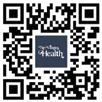
As with many holistic health solutions, the value of chiropractic care has been clouded by misconceptions. Unfortunately, this prevents many people from getting the care they need to thrive. Here, we debunk some of the most common myths and highlight the true value chiropractic care can make in how your body moves, feels, and functions.
STORY: DR. RENNY EDELSON
FACT: While chiropractic care is known for helping patients relieve pain and get back to activities they love, that isn’t the only benefit. AlignLife Chiropractic & Natural Health Centers can also help you manage a wide range of health conditions.
The reason for this? The nerves controlling your body’s systems are all connected to your spine! When there is a subluxation or interruption in the nerve's signal, that’s when symptoms show up. By relieving the pressure and guiding the body back into alignment, chiropractic care can help you overcome common health issues like headaches, digestive upset, and more.
FACT: Chiropractic care benefits all ages because it focuses on relieving pain, improving mobility, and improving overall health!
AlignLife chiropractors are trained to care for all ages, and some even hold specialties for infant, pediatric, or pregnancy care. For babies, chiropractic can help them thrive post-birth by aligning misplaced vertebrae, easing colic, and enhancing development. For children, chiropractic can relieve headaches, improve posture imbalances, and improve focus. Athletic kids and teens also love chiropractic as it helps them stay on top of their game and injury-free. For adults, routine care can help you stay healthy, reach health goals, and save thousands in healthcare costs down the road.
FACT: Getting an adjustment may be uncomfortable at times, but never painful. In fact, many equate it to the same satisfying sensation as popping their knuckles!
Chiropractic adjustments involve stretching, manipulating, and massaging sore muscles and joints. But that popping noise you hear isn’t actually bone cracking. It’s caused by gases moving through the fluid in your joints. So, while you may experience some momentary discomfort after an adjustment (think after-workout soreness), it fades quickly and leaves you feeling refreshed, rejuvenated, and energized.
DR. GARY BRODEUR (L) & DR. RENNY EDELSON (R) ALIGNLIFE.COM
Since 1999, it’s been our mission to help every man, woman and child to live a life of health and vitality. Our focus on health and wellness is not solely to make you healthy, but our driving passion is to use health as a vehicle for individuals to experience greatness in life.



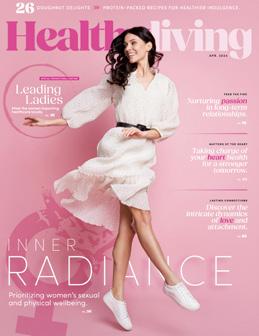





AMY CEARLEY CEO/Founder
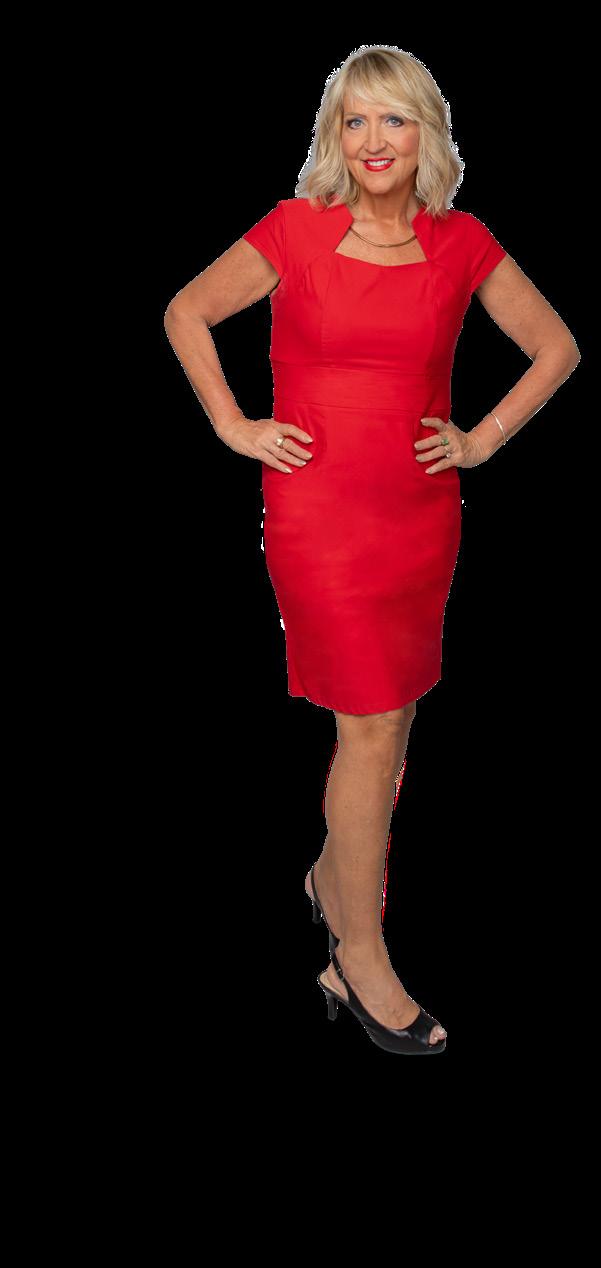
PAID PROMOTIONAL FEATURE
Somebody who understands the healthcare system, health insurance and which ones are best suited for certain diagnosis. They must be well connected in their community and have a solid understanding and ability to access resources for patients or caregiver e ectively and e ciently. This means understanding, long-term care insurance, Medicaid, veteran programs, and other senior services.
An advocate needs to be fearless and passionate about a family’s right to choose. The only way families can make good choices for their healthcare journeys is by having a clear understanding of what options are available to them. Patients and caregivers should be able to choose their journey, and those choices need to be respected, protected and enforced by the healthcare advocate.
When a family chooses me to help them during their time of crisis, I take this responsibility very seriously. I treat them as I would want my own family to be treated and make sure I am setting them up for not just immediate success but long-term care planning. I like to call it the future emergency action plan that almost always has to be used.
I also pride myself on making sure families have a clear financial understanding of what they can expect and what they need to be prepared for. Nobody likes financial surprises, and most people are aware of the fact that the healthcare industry is a business.
I consider myself an expert in the areas of Parkinson’s and Alzheimer’s, not just through personal experience, but by helping thousands of seniors over the years. I am very proud of the fact that many doctors in our community, and the hospitals, call me to help them assist families through what I consider two very di cult diagnosis – Alzheimer’s and Parkinson’s.
352.775.2952
tricountycaregiverresourcecenter.org 561 Fieldcrest Drive, The Villages 918 Rolling Acres Rd, Ste 8, Lady Lake
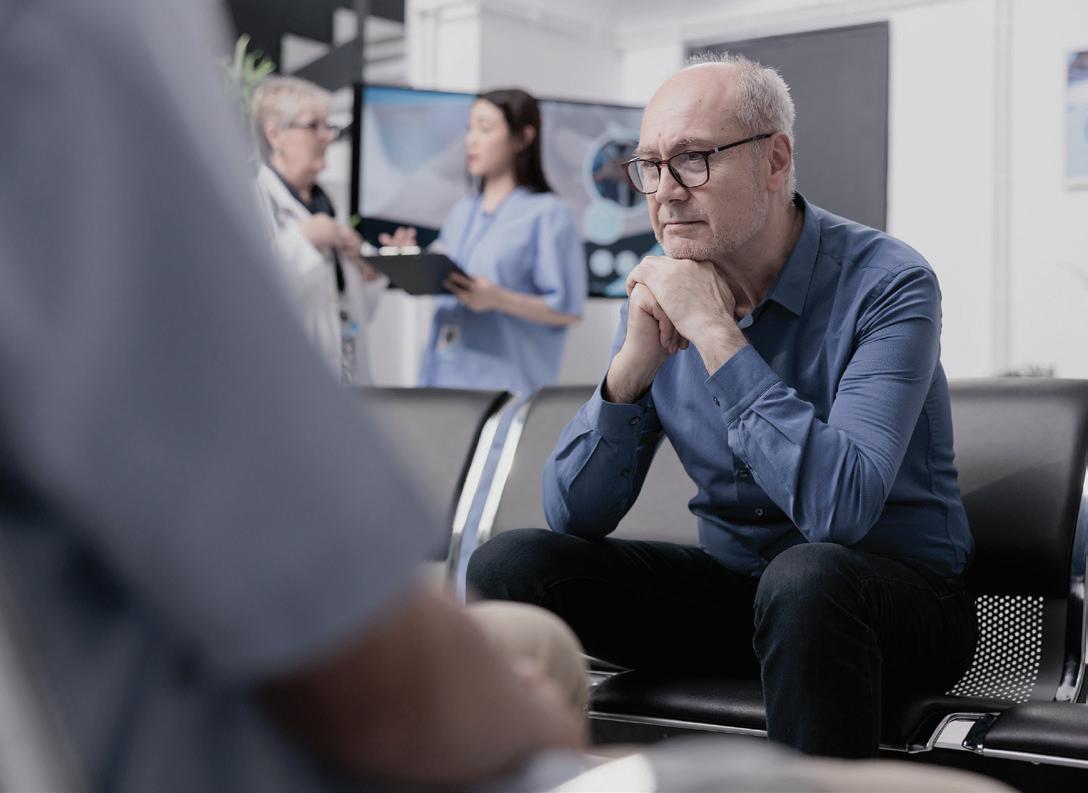



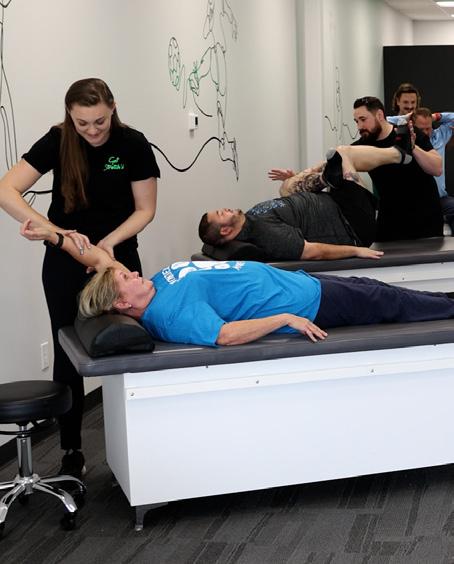


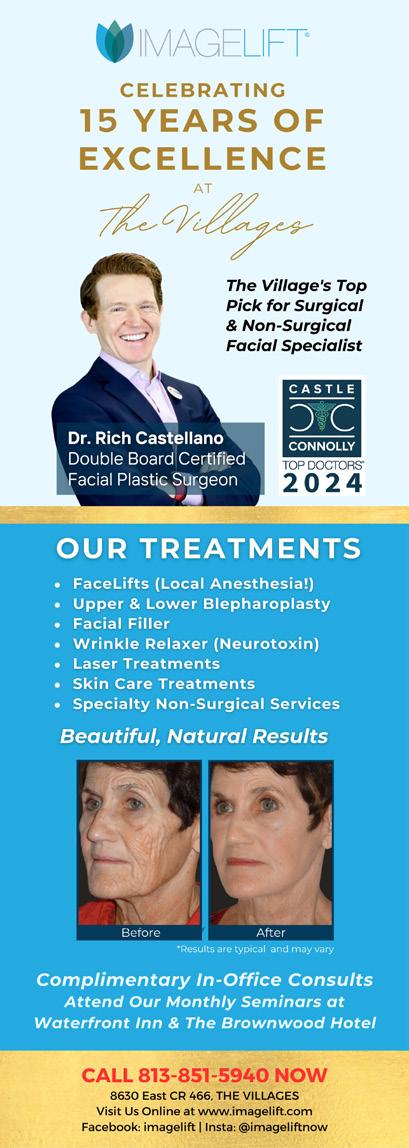
Dr. Aurindom Narayan takes pride in providing comprehensive care and guidance to patients in Summerfield and surrounding communities.

For more than two decades, Dr. Aurindom Narayan has been at the forefront of the field of internal medicine, leaving a lasting impact on his patients and the healthcare community.
His journey into the world of medicine began in New Delhi, India, where he pursued his medical education at the All India Institute of Medical Sciences. Initially, he qualified as a general surgeon, but his career path took a turn when he couldn’t secure a job in India and struggled to obtain a categorical residency in the United States.
Driven by a passion for healthcare, Dr. Narayan switched to internal medicine, his second love. He completed his residency training at the University of Medicine and Dentistry of New Jersey and since established a reputation as a dedicated and respected Internal Medicine Specialist in a wide range of settings from hospitals and nursing facilities to rehabilitation centers and assisted living communities.

After moving to Florida, Dr. Narayan practiced in St. Petersburg and is now settled near Summerfield where his o ce at Lakeview Healthcare System—a partner with Aegis—is located today.
There, Dr. Narayan takes pride in addressing his patients’ health concerns from head to toe, including standard o ce visits and treating illnesses to minor procedures like skin surgery, and joint injections. His patient-centered approach places a strong emphasis on preventive care to optimize health and longevity by working to prevent problems before they arise.
Dr. Narayan’s commitment to comprehensive patient care is supported by his belief in a multidisciplinary approach to medicine. He values teamwork and strives for the best possible outcomes for his patients. As he puts it, “I like to be involved in the care of my patient as a whole and not just be a referrals coordinator sending patients to di erent specialists for every problem.”
Recognizing his limitations, however, when he does end up referring a patient out, Dr. Narayan says he makes sure to stay in the loop.
“Let’s say my patient has a complex cardiac problem and I send my patient to the cardiologist,” he explains. “Well, I’m not just washing my hands of it. I would want to know what the cardiologist recommended, why he recommended it, and whether my patient is happy with that recommendation. In the process, I learn something, my patient learns something, and together we grow and move in the best possible direction.”
If interested in seeing Dr. Narayan, he is currently accepting new patients. To schedule an appointment, contact his o ce at 352.307.9925.





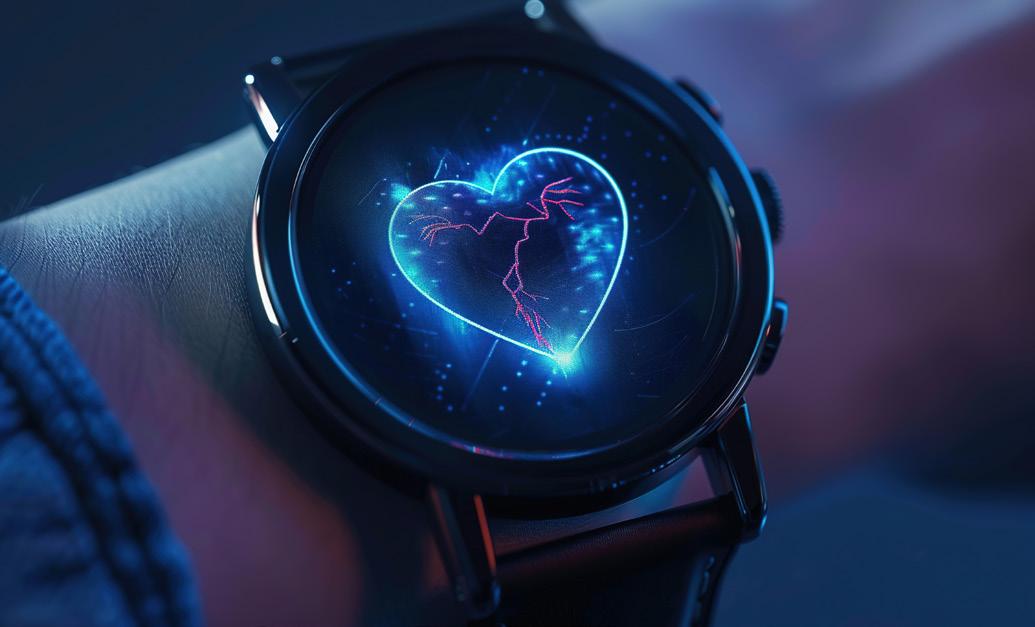
PAID PROMOTIONAL FEATURE
“The best time to start investing in your health is when you don’t have problems,” says Ahmed Nagib Mahmoud, MD, a board-certified interventional cardiologist with Orlando Health Medical Group FHV Health.
Men often don’t realize they can be at increased risk of coronary disease. For example, low testosterone levels can impact more than libido and sexual performance and may be linked to heart disease.
What can men do to protect their heart health?
For starters, realize that some risk factors are out of your control, such as age, genetics, and family history.
But rather than stress over things you can’t change, Dr. Mahmoud suggests tackling the areas where you can actually make a di erence:
• Exercise
• Diet
• Lifestyle
• Screening tests
“We know from studies that the more you exercise, the less your risk of coronary disease,” says Dr. Mahmoud, noting that brisk walking 30 minutes a day five
times a week can improve health.
When it comes to diet, aim to eat less red meat, fried food, and carbohydrates, but more fish, poultry, vegetables, berries and nuts, as in the Mediterranean diet.
Lifestyle is a huge factor in heart health. For example, the e ects of smoking and alcohol consumption build over time.
Although many people consider vaping healthier than smoking, Dr. Mahmoud notes that the medical community is beginning to see evidence that vaping poses risks for the heart.
He points out that there is a strong connection between atrial fibrillation and alcohol consumption. Drinking can also increase blood pressure.
“Anyone who has evidence of cardiomyopathy or heart failure should avoid drinking,” he says.
Because high cholesterol and diabetes are major risk factors for heart disease, everyone after age 30 should have a lipid panel to check cholesterol levels. If you have a family history of high cholesterol, get screened earlier so the condition can be treated if present.
After age 35, it’s important to screen for diabetes.
Since symptoms of hypertension don’t appear until blood pressure is already too high, monitor it regularly.
“We like to see blood pressure at 130/80 or lower. Anything above 135/85 is considered high,” notes Dr. Mahmoud.
“Coronary disease doesn’t just happen suddenly. It accumulates over the decades,” he adds. “If you tackle risk factors you can change early, it really helps prevent progression.”


511 Medical Plaza Dr., Suite 101, Leesburg 352.728.6808 OrlandoHealth.com/fhv









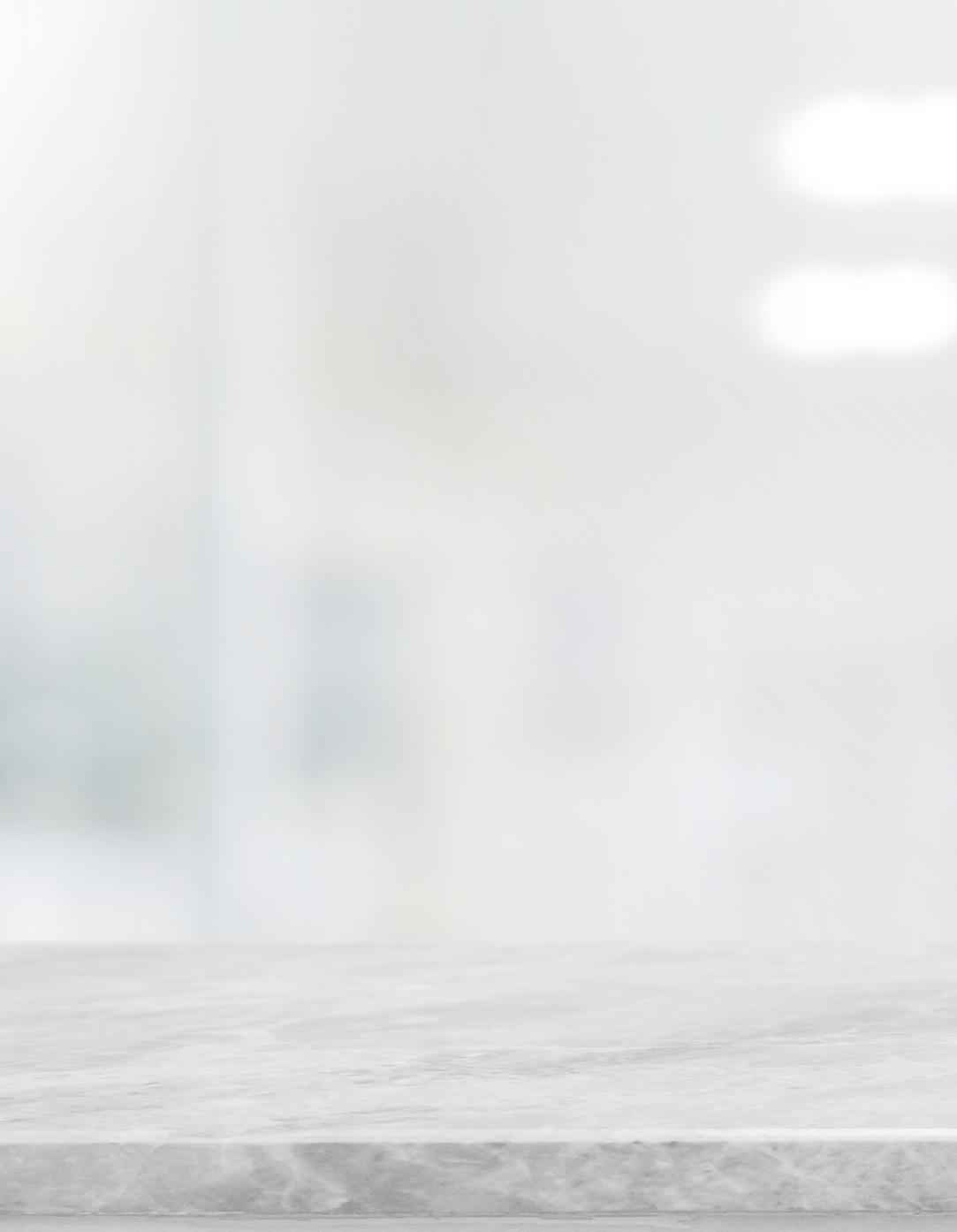


BUT HE SAID TO ME, “MY GRACE IS SUFFICIENT FOR YOU, FOR MY POWER IS MADE PERFECT IN WEAKNESS.” THEREFORE I WILL BOAST ALL THE MORE GLADLY ABOUT MY WEAKNESSES, SO THAT CHRIST’S POWER MAY REST ON ME. THAT IS WHY, FOR CHRIST’S SAKE, I DELIGHT IN WEAKNESSES, IN INSULTS, IN HARDSHIPS, IN PERSECUTIONS, IN DIFFICULTIES. FOR WHEN I AM WEAK, THEN I AM STRONG.
2 CORINTHIANS 12:9-10



